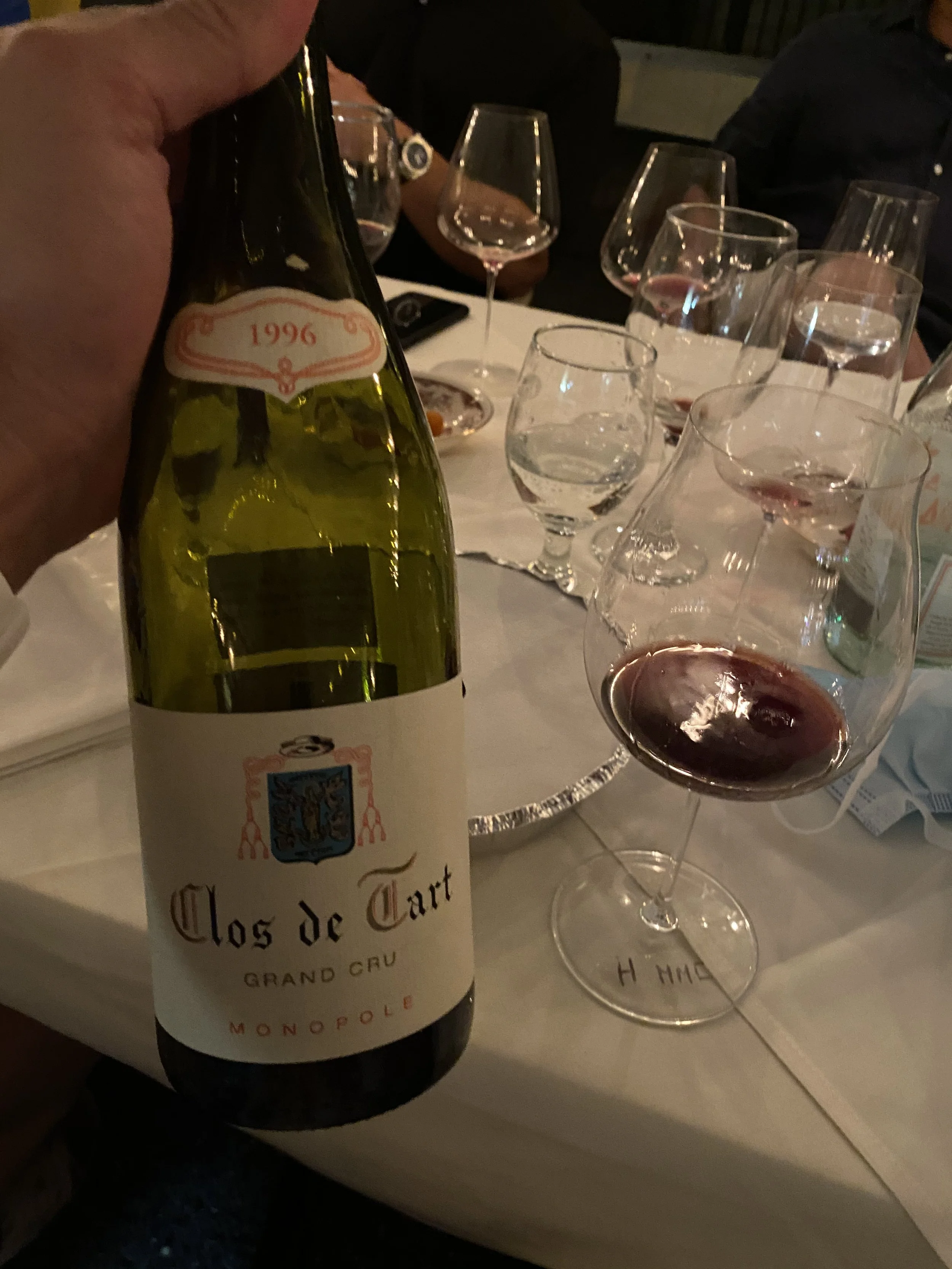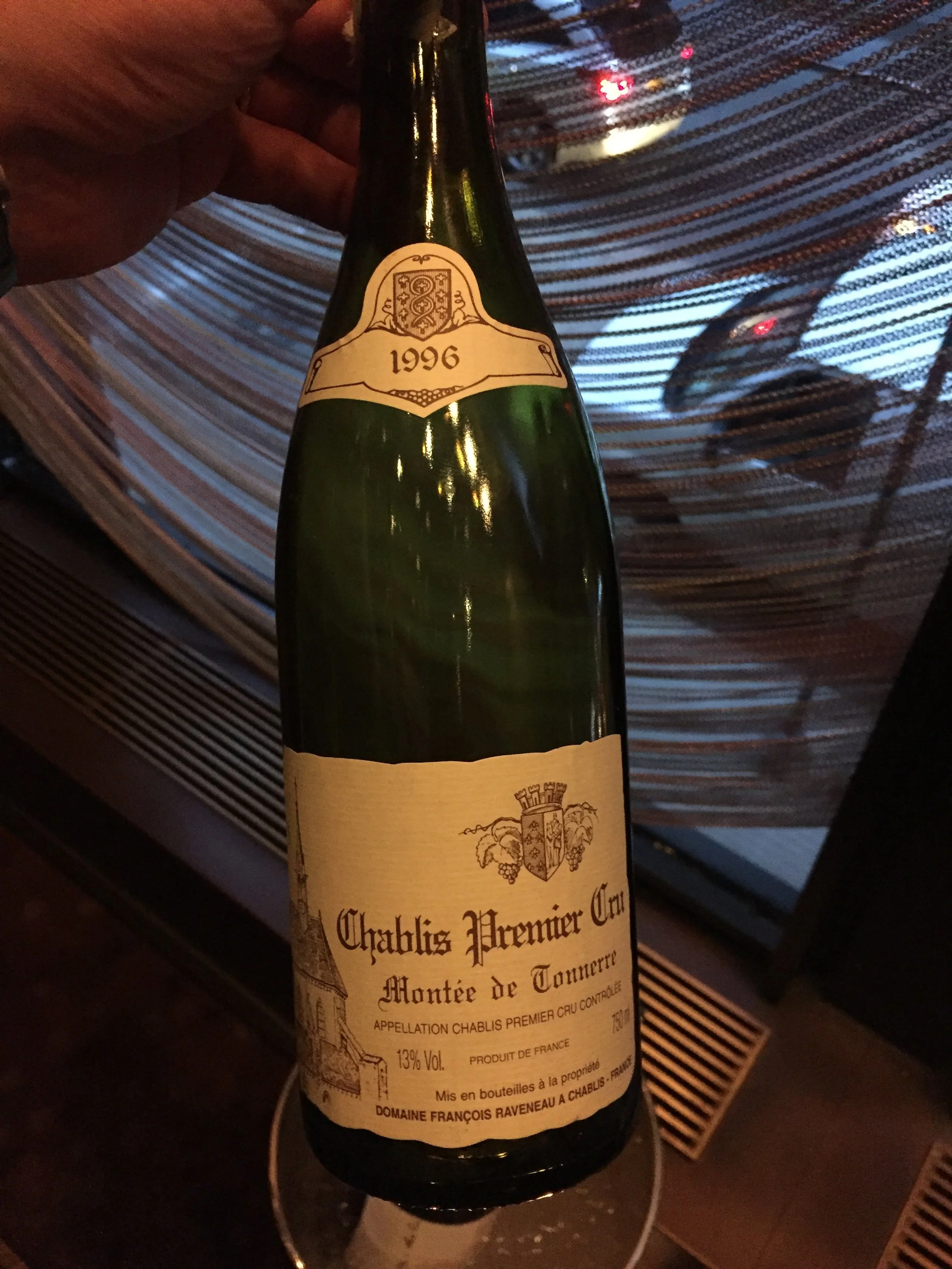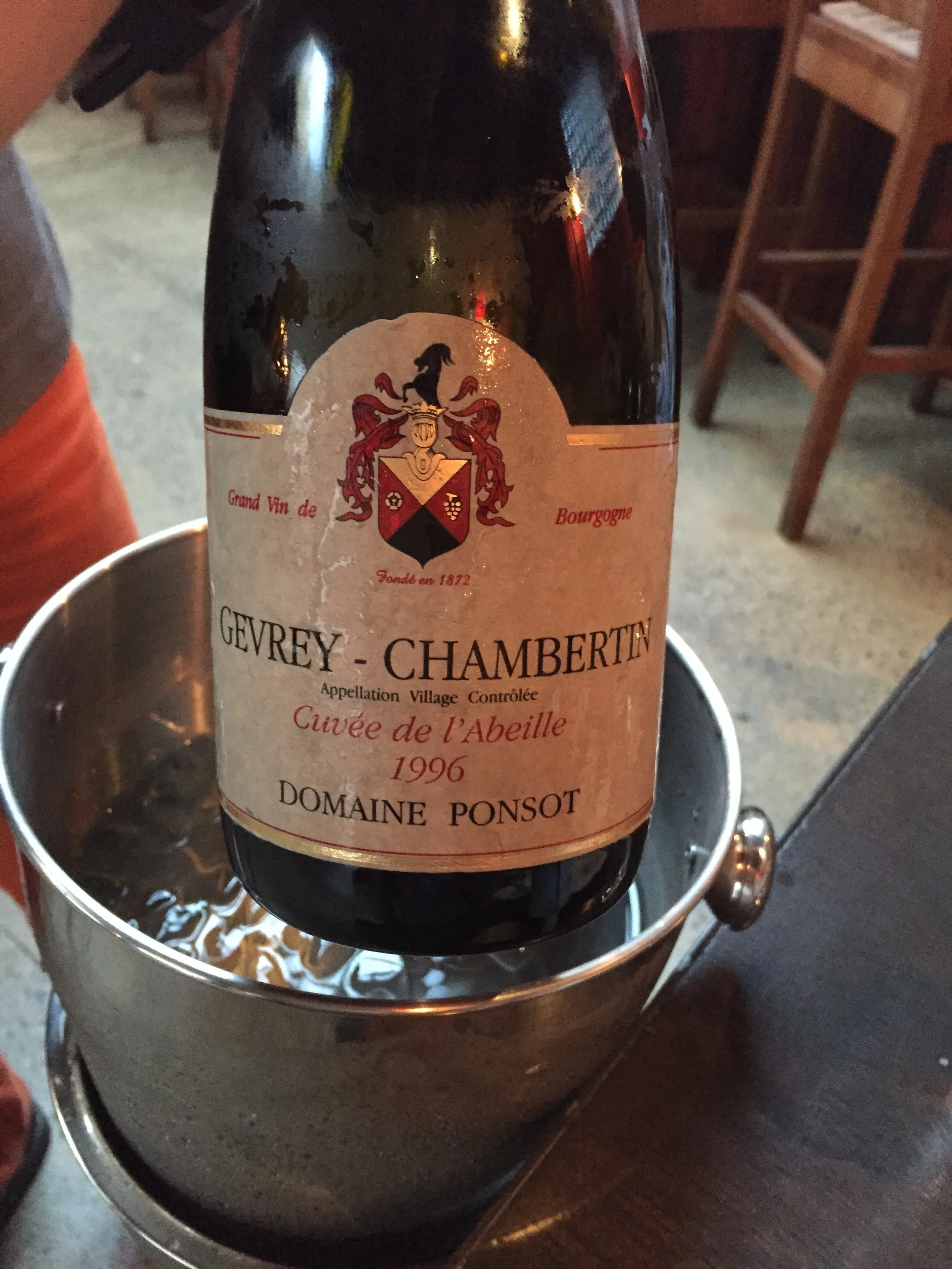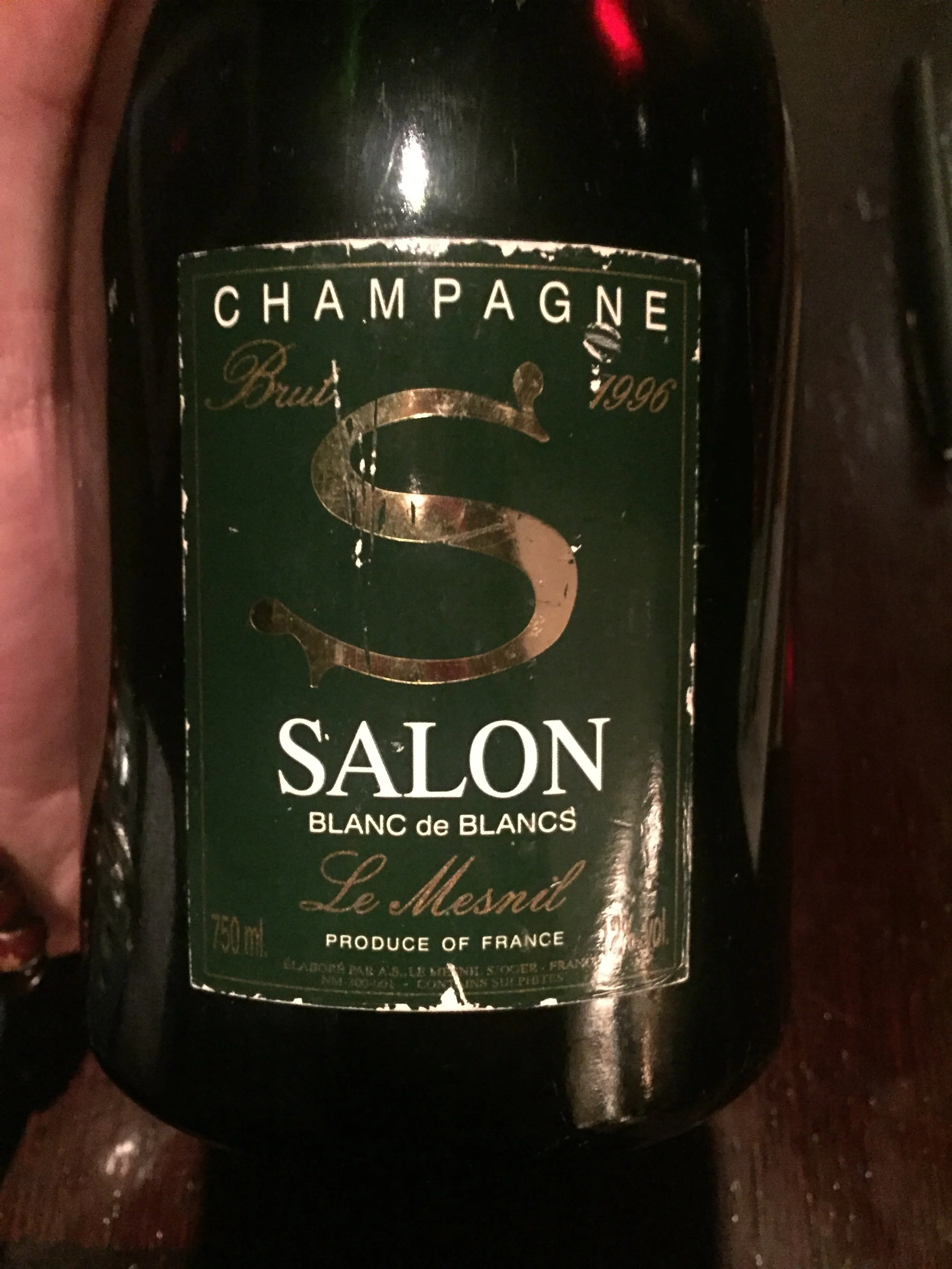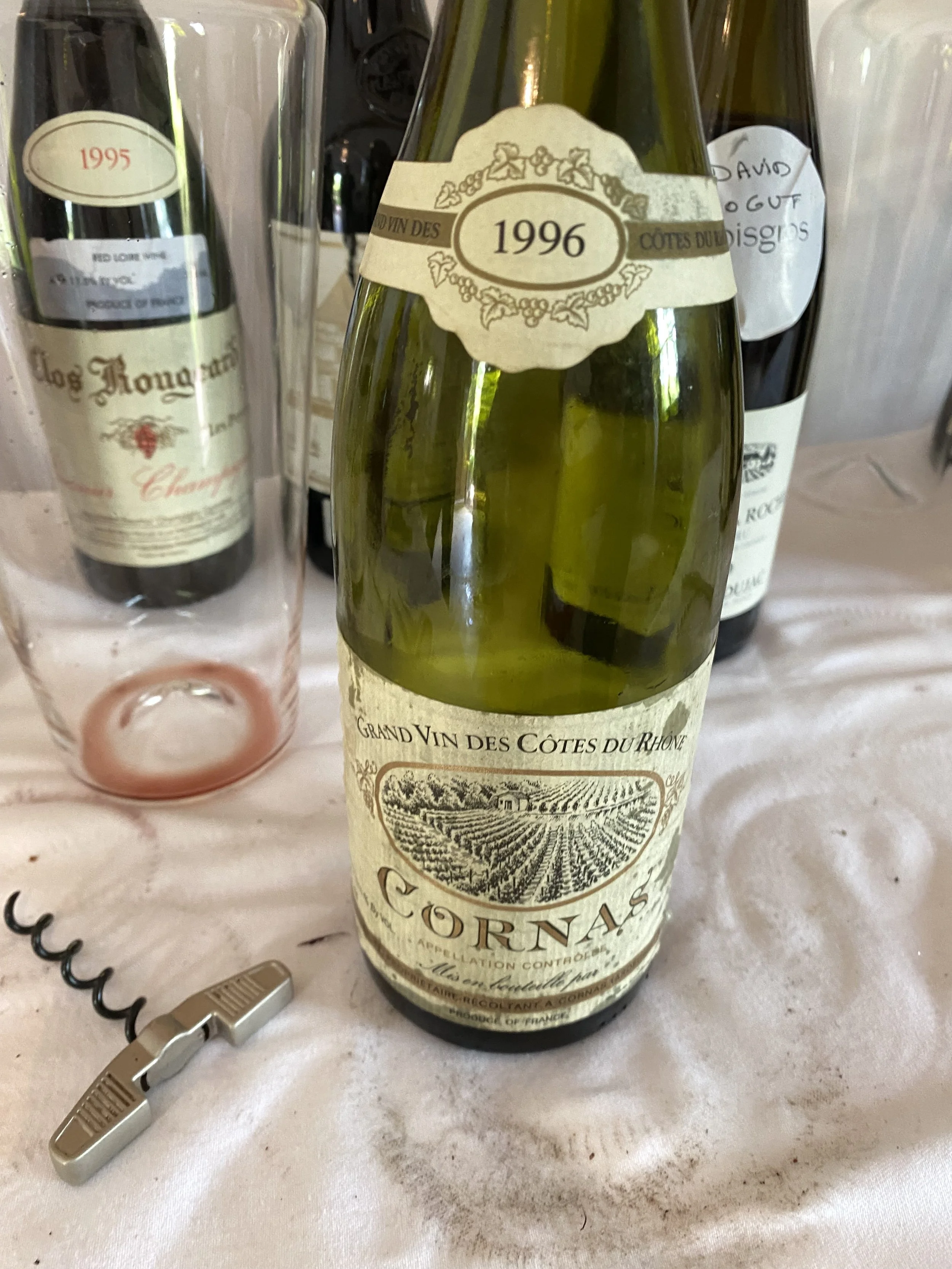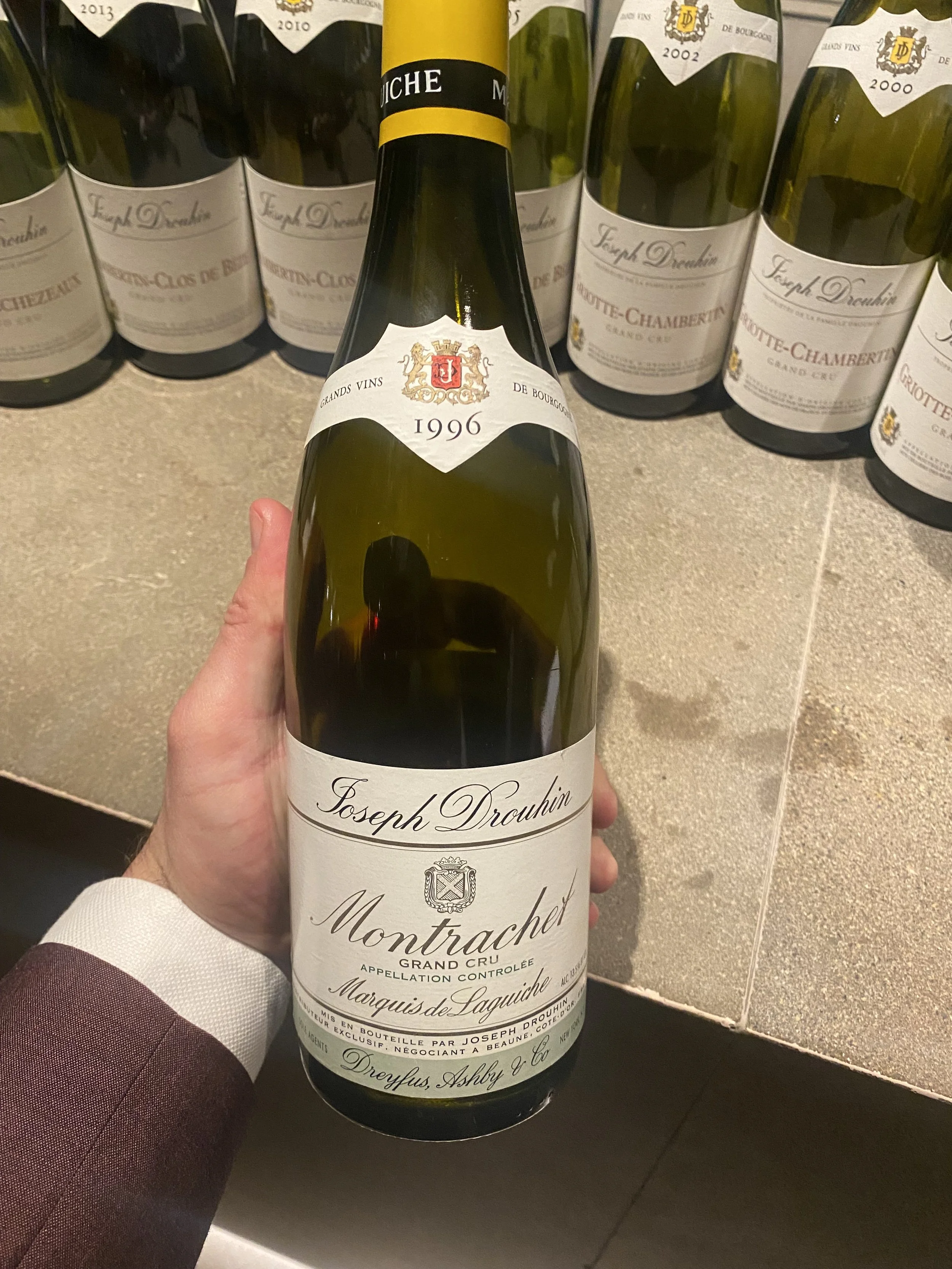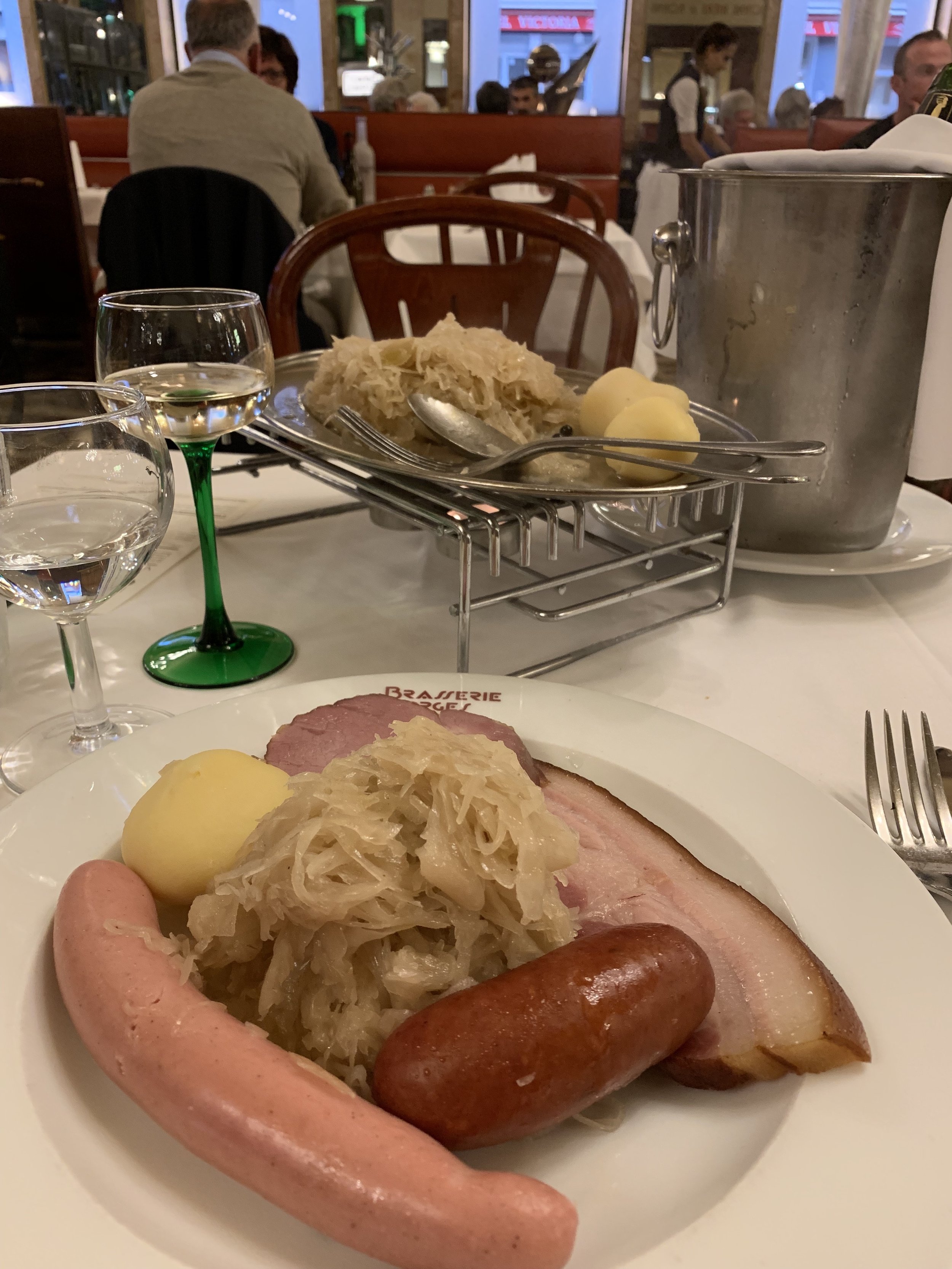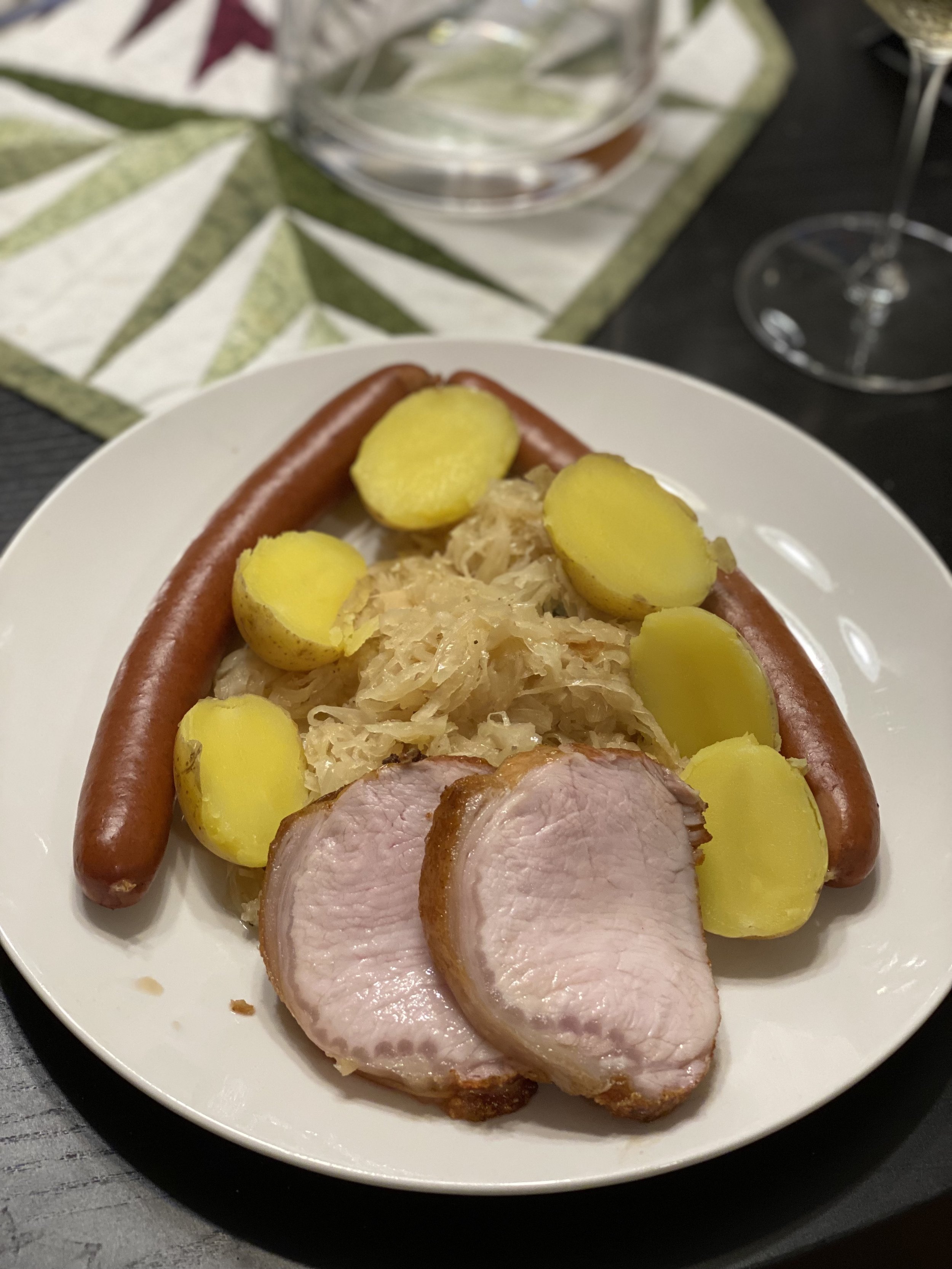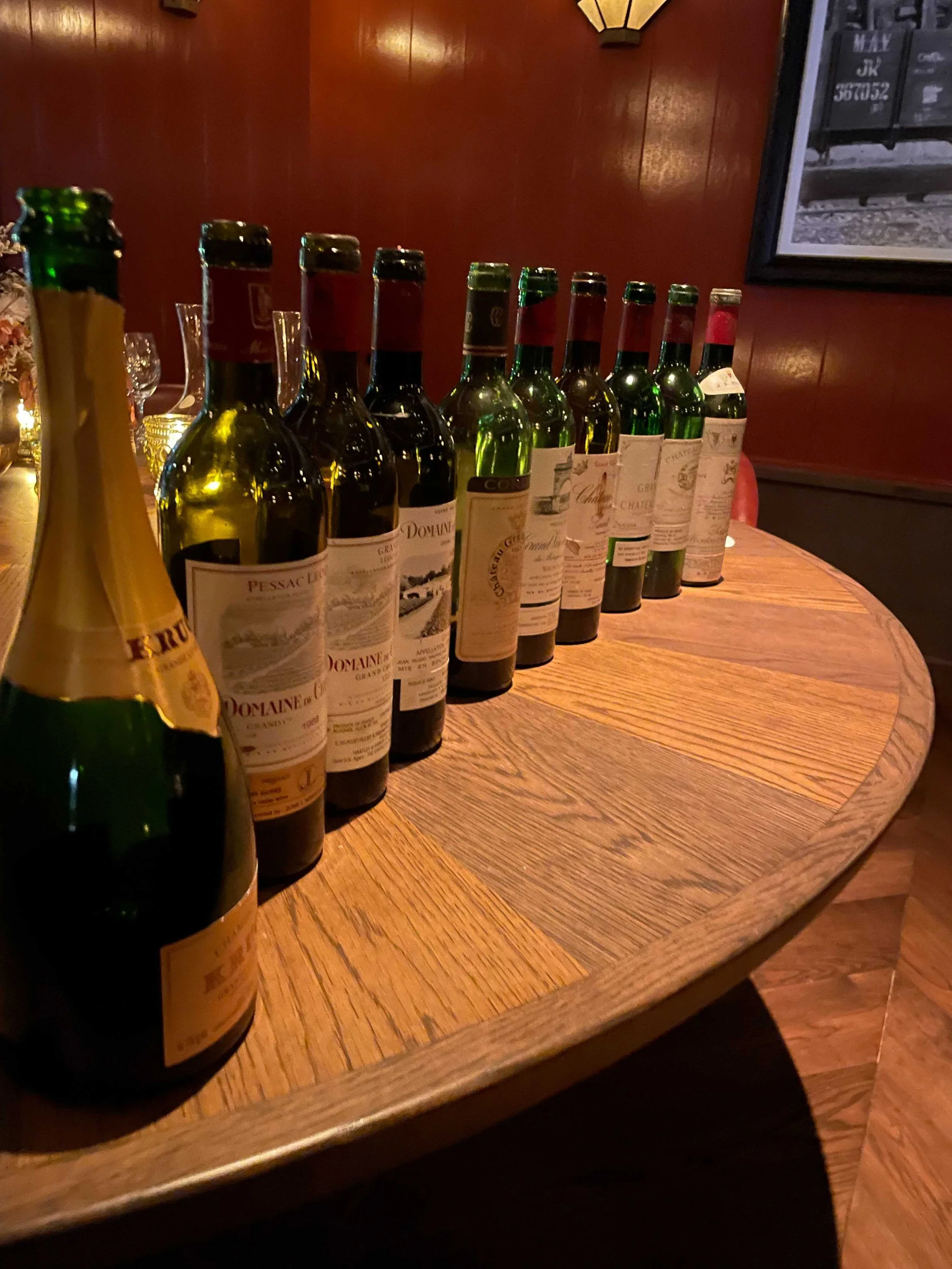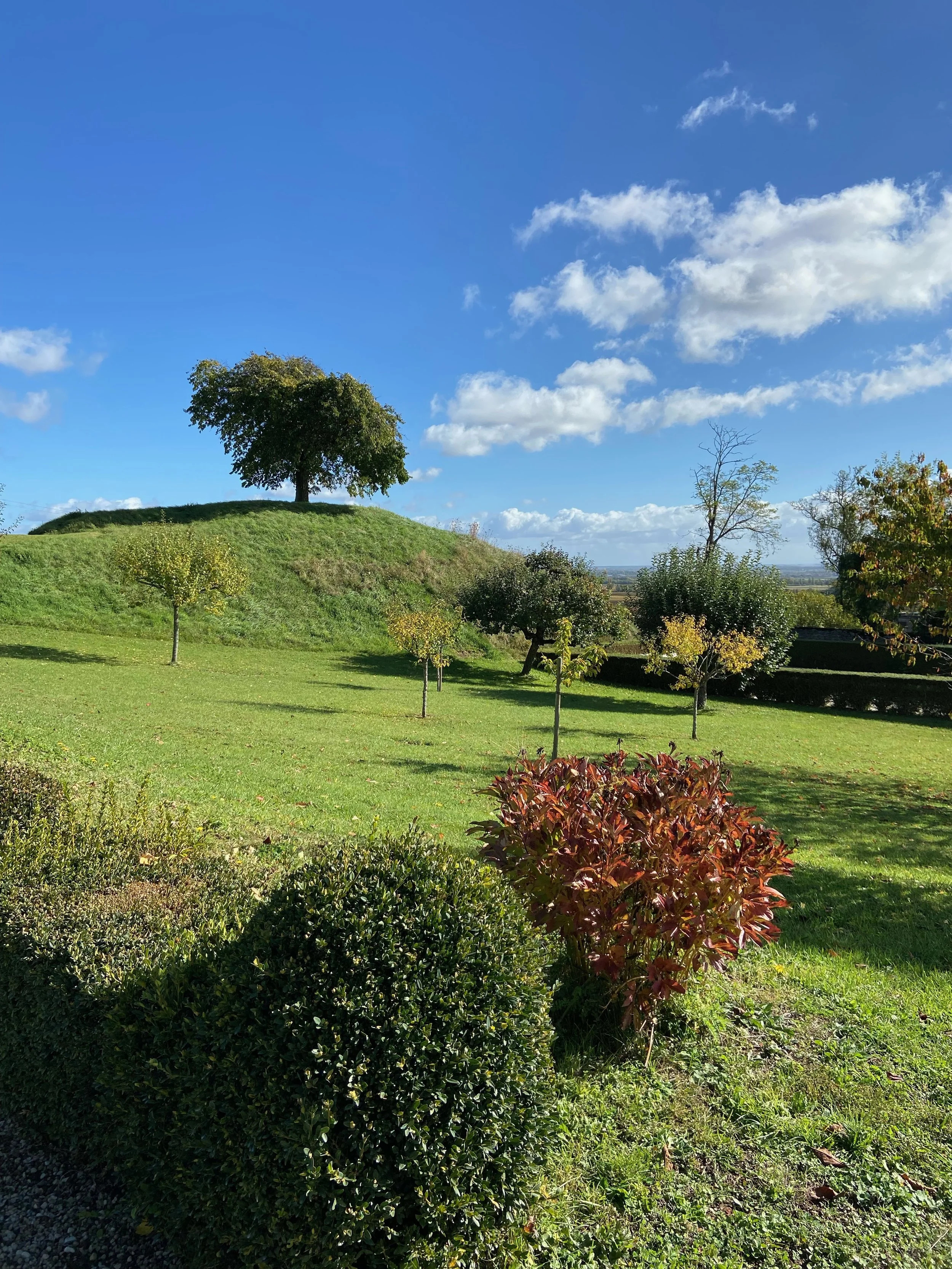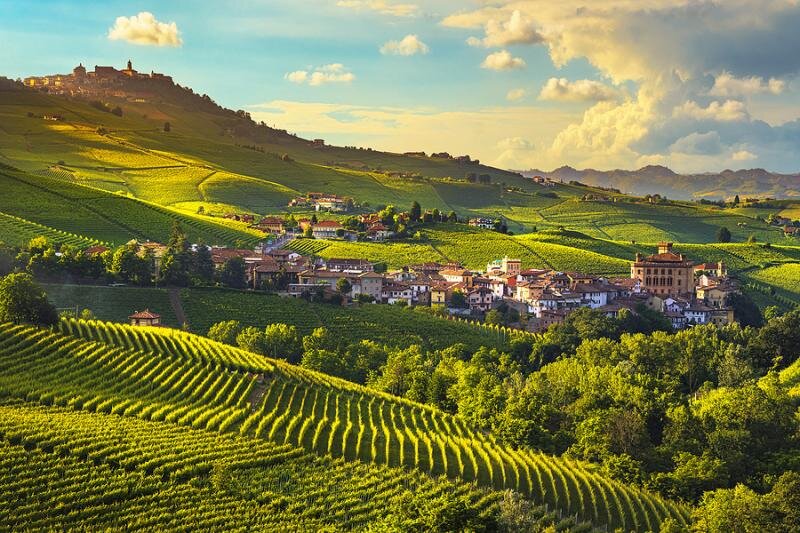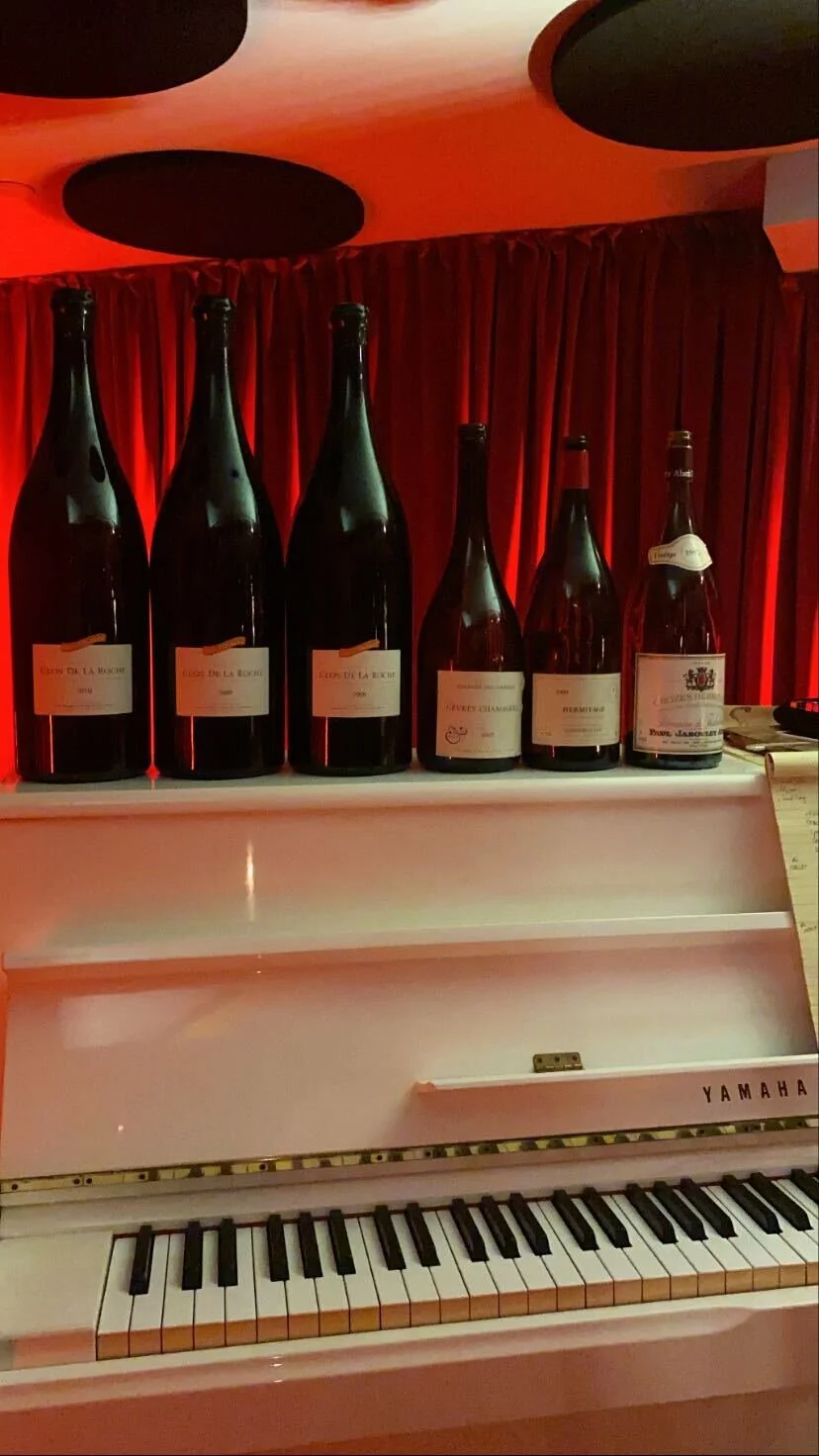1996 in champagne. what happened?
by Edouard Bourgeois
November 21, 2025
Ratings for 1996 often use words like "exceptional" and "grandiose," with some comparisons to 1928. What made 1996 objectively unique was the high average potential alcohol (10.3%) combined with high total acidity (10g/litre)—figures rarely seen together. As Charles Philipponnat noted, this is a significant jump from the 9.3% potential alcohol common forty years prior.
Acidity and potential alcohol work together for balance, but typically, when one is high, the other is low. In 1996, both figures were high. Bruno Paillard called it a 'naughty boy' vintage due to its unpredictable nature and the anxiety it caused producers while waiting for acidity levels to drop. However, the result for those with patience is "fantastic."
While acidity is key for aging, the true test is time. Over two decades later, the remaining 1996 bottles reveal which producers succeeded. The best examples are still complex and alluring, where the high acidity is balanced by a wide range of aromas, from brioche to stone fruit. Unfortunately, some other bottlings show only residual acidity, resulting in unbalanced and tart wines.
I recall opening a glorious bottle of 1996 Cristal for my son's birth seven years ago; the wine was still vibrant and charged.
Another fabulous example was made by Krug. As Olivier Krug said, "It’s a year where a good house or a good winemaker will make a good wine... It’s a tricky vintage." Other industry professionals have shared similar sentiments, noting that some vintners either opted out of making a vintage bottling or failed to achieve balance, resulting in wines that are already clumsy or tired.
The 1996 vintage often draws comparisons to its predecessor, 1995. These were the last two great Champagne vintages following the 1988, 1989, and 1990 trio. The 1996s are powerful wines; the best combine weight from ripeness with tension from acidity, providing the interest, complexity, and structure needed for long-term aging.
Interestingly, more houses released 1995 as a vintage Champagne than 1996, with a ratio of roughly 60% (1995) to 40% (1996).
Given its unpredictability, the safest bet for 1996 Champagne remains to go with producers you trust.
While looking for pictures of 1996 Champagne on my IPhone, I also found several other wines from various regions where the 1996 vintage truly shone, as seen in images below;jbgories
What's Pressoir Drinking
What’s Pressoir Drinking
By Edouard
12/15/21
December 15, 2021
Edouard Bourgeois
Whenever I tell my friends I had a great bottle of Zinfandel, I really enjoy watching the surprise on their faces while their eyebrows reach the middle of their forehead. However, the ones who know me well also know that I am usually referring to one of the most serious producers in California when it comes to Zinfandel. And that is Ridge Vineyards.
The multi-estate enterprise cultivates vineyards in the Santa Cruz Mountains, Sonoma County and Paso Robles. It is the largest grower of certified organic grapes in the appellations of Sonoma County and the Santa Cruz Mountains. The business was founded in 1959 when three Stanford Research Institute engineers bought an abandoned winery in the Santa Cruz Mountains. The vineyards had been planted in the late 19th century by a San Francisco physician who produced his first vintage in the original winery, called Monte Bello, in 1892. The first Ridge vintage was in 1962. For more than 50 years Ridge’s winemaker and CEO was Paul Draper, a legendary figure in California winemaking I was lucky to meet in my early years as a sommelier in New York. Mr. Draper retired in 2016 but the estate still produces excellent wines.
If Zinfandel is mostly known for the affordable and mass produced “White Zin” which by the way accounts for 85% of the wine made, the red wines produced from that varietal is typically very bold, spicy and dark. I’ve always thought of it as a jacked up Chateauneuf du Pape.
Another name for Zinfandel is Primitivo, which is found in Italy. But actually its Croatian name of origin is Tribidrag. Useful geeky information…
I opened the bottle pictured below a week ago to accompany a juicy roasted pork shoulder (not pictured as it disappeared too quickly). The wine was impressively youthful, still very powerful but with so much nuance. This particular cuvée was made from fruits grown in the Jimsomare Ranch, just below the Ridge property. Cabernet, Zinfandel, Merlot and Chardonnay vines are planted there with the Bordeaux varieties most often making it into the Monte Bello blend. Most of the Zinfandel vines on the property date back to 1884 and the first Zinfandel made on the ranch was in 1968. Ridge also bottles wines for its Advance Tasting Program (ATP), a wine club founded in 1977, from the Jimsomare fruit and that bottle was one of them.
This was delicious and surely a great choice for the cold months of the holidays and to pair that comfort food we are all craving.
What's Pressoir Cooking? Choucroute Garnie
by Max Goldberg Liu
December 8, 2021
For those of you who don’t know, Edouard somewhat famously has a healthy obsession with Bœuf Bourguignon - the beef stew that is definitely in the top 5 of French comfort food. This involves frequently ordering the dish at restaurants, debating the pros and cons of different variations, and holding strong opinions on what constitutes a proper bœuf bourguignon and what does not.
I, in turn, have my own obsession with Choucroute Garnie, a dish that I believe is somewhat less associated with French cuisine here in the US but which, despite its regional origins, can now be found in nearly every corner of France.
Directly translating to “dressed sauerkraut,” Choucroute Garnie is essentially a plate of hot sauerkraut that has been warmed with aromatics and spices, topped with a variety of meats, and served with a side of potatoes.
Choucroute might seem out of place in French gastronomy, but it is said that the dish came from Eastern/Central Europe. Major areas of the Germanic regions of Alsace and Lorraine became part of France following the 1648 Treaty of Westphalia, that ended a long period of violence and devastation in Europe caused by the Thirty Years War and Eighty Years War.
While this would certainly not be the last time that Alsace and Lorraine would change hands until the modern day, the regional cuisines would remain firmly entrenched in French culture, particularly in the grand Brasseries, two of which make a particularly good choucroute: Brasserie Lipp in Paris’ 6th Arrondissement, where the dish is crowned with a mammoth glistening pork shank, and Brasserie Georges in Lyon opposite the Gare Perrache, whose massive portion (le plateau de choucroute) with sausages, pork belly, and pork loin can easily feed two (or just one hungry traveler…).
There are not many restaurants, unfortunately, here in New York that serve choucroute, so upon a recent craving, I took it upon myself to try to recreate it at home, which was somewhat easier than expected.
It’s really as simple as braising some high quality sauerkraut with onions, white wine, a little stock, garlic, juniper berries, caraway seeds, cloves, and bay leaf, and topping that with your preferred meats and some boiled potatoes. You can braise the meats with the kraut if you’d like but I thought this quick version was nearly as good. I kept things judicious with only some Schaller & Weber frankfurters and a roasted pork loin but you can go as big or as small as you’d like. Please just avoid Choucroute de la Mer if possible - I am a choucroute purist and believe that fish has no place in a proper choucroute!
The classic wine pairing is an Alsatian white like Riesling, Pinot Gris, Pinot Blanc, or even Gewurtztraminer but it pairs wonderfully with any relatively dry white that isn’t too rich.
Choucroute Garnie Rapide
1 lb boneless pork loin
Kosher salt
3 tablespoons vegetable oil (or lard/duck fat)
1 medium yellow onion
1 cup dry white wine
1/2 cup chicken stock
1 tied bouquet garnie of 2 crushed garlic cloves, 5-10 dried juniper berries, 1 clove, 1/4 teaspoon caraway seed, 1 bay leaf
2 lbs good quality sauerkraut, drained
1 package natural casing frankfurters (Schaller & Weber makes a great one)
3-5 small Yukon gold potatoes, peeled, halved or quartered, and simmered in salted water until tender
Up to 48 hrs before cooking, generously season the pork loin on all sides and keep refrigerated on a wire rack set over a rimmed baking sheet
Preheat oven to 250º-300ºF (depending on how well your oven can hold low temperatures). Cook the pork loin in the oven until an instant read thermometer reads 120ºF, around 1 hr. Set aside
In a large dutch oven, heat the oil or fat until shimmering. Add onions and cook until soft but not brown.
Meanwhile, in a colander, lightly rinse the sauerkraut to your desired level of tang, if necessary.
Add wine, bouquet garni of aromatics, and stock to the onions, stir, and cook over medium-high heat for 2 minutes.
Add sauerkraut, stir to combine, and lower heat to a bare simmer. Cover and cook for 30 minutes or until much of the liquid has been absorbed and the sauerkraut is deeply aromatic.
Preheat a cast iron pan over high heat with neutral oil. Quickly sear all sides of the reserved pork loin and sear, turning until well browned on all sides.
Fill a large saucepan with water and bring to a simmer over medium-high heat. Add the frankfurters and simmer until heated through. Remove and keep warm.
Season the sauerkraut with salt to your desired level. Place a heaping amount on a warm plate, add 1-2 sausages, 2-3 slices of pork, and a few pieces of potato. Serve with strong Dijon mustard and white wine like Chablis or a dry Alsatian Riesling or Pinot Gris.
Recap of our Pressoir.wine Right Bank Bordeaux Dinner
What’s Pressoir drinking
by Edouard
12/8/21
December 8, 2021
by Edouard Bourgeois
As a Burgundy lover, I always felt particularly charmed by the round and polished style of the wines from the Libournais, also known as the right bank of the Bordeaux region. With Merlot starring as a soloist or at the very least as the main actor in the blend, the wines typically have fewer sharp edges than the more herbaceous Cabernet Sauvignon of the left bank, particularly those of the famous Médoc.
Last Thursday, we were honored to host our Bordeaux dinner at Francie. The Brooklyn restaurant, opened not even a year ago and already a foodie destination, put together a feast focused on meat dishes, including their signature aged duck and one of the best côte de boeuf a carnivore could imagine. The lineup of twelve wines, evenly split between the Pomerol and Saint-Emilion appellations, delivered an impressive performance, despite their age. The oldest wine was a superb 1964 Château Beauséjour from the Saint-Emilion appellation, whose eponymous town and surrounding vineyards was made a UNESCO World Heritage Site. Other highlights for me were the Chateau La Conseillante Pomerol from the challenging 1979 vintage. A suave and graceful wine in which Merlot was spiced up with just enough Cabernet Franc to reach impeccable balance. Still in the Pomerol vicinity, I really enjoyed the side-by-side comparison of Châteaux Trotanoy and Vieux Château Certan from the same 1985 vintage. The former displayed a slight austerity at first while the latter VCC held your hand to enter a wonderful world, filled with scents of ripe plums and dark chocolate, with earthy notes of tobacco swirling in the air.
In Saint-Emilion, the exquisite bottle of Cheval Blanc 1988 certainly won my heart. Perfection comes to mind when trying to describe it. A wine at its peak, mature but lively and proud. We closed that impressive tasting with a bottle of Pavie from the same 1988 vintage, now ranked alongside Figeac, Cheval Blanc and Ausone in the top “A” category of the Saint-Emilion classification. I still can’t believe how youthful this wine was. Despite decanting the wine a couple hours prior, it was still gasping for oxygen to develop its full, impressive potential.
The gorgeous lineup, decanted and awaiting under the careful eye of “Francie”
The Team Attends La Paulée de Meursault!
DANIEL
On November 22nd I went back to La Paulée de Meursault for the first time since last year’s cancellation. It was a reminder of how wonderful this tradition is.
Not only did I return but I was fortunate to be able to bring several members of the New York Paulée team with me. Unfortunately, I could not get enough tickets for everyone.
The day started with an early train to Beaune from Paris. I kind of felt like we were a pack of campers heading off to camp. Good spirits, lots of anticipation and no concerns were the feelings of the day for me.
The first stop was a late morning aperitif at Domaine des Comtes Lafon. This was an extra special moment as were were siting with Dominique, his mother and his daughter Lea, nephew Pierre and their spouses who represent the next leadership at Lafon There we were with 3 generations sitting in a polite circle in this stately manner where the origins of La Paulee de Meursault started with Dominique’s great grandfather, Comte Jules Lafon.
After a couple of glasses of Meursault Genevrières 2011 we packed our jeroboams., magnums and bottles into the back of someone’s car and headed to the Château de Meursault for the traditional 6 hour “lunch” accompanied by hundreds of different wines brought to the party by almost every grower in the village.
There are rules in Meursault that we don’t have in New York. For example, the sharing starts with younger vintages of Meursault - with an occasional Puligny or Chassagne - but that is slightly frowned upon. The second course progresses to more mature vintages and higher appellations.
Certainly no red wine can be circulated until after the third course. I once found myself scolded by Philippe Ballot, the president of La Paulée de Meursault, for accompanying my guest that year, Eric Rousseau with a magnum of Chambertin 1976 during the second course. The dressing I received was this, “Mon cher Daniel, nous produisons du Meursault rouge aussi mais il ne faut absolument pas le servir avant le troisième plat” My dear Daniel, we also make Meursault red but you must wait for the 3rd course to pour some to your convives. I had to explain this to Eric, who was slightly amused.
Well, we did eventually get to the red wine but not before tasting stellar bottles from Francois Jobard, Comtes Lafon, Roulot, Drouhin and many many more.
The evening continued at an after party at Antoine Jobard’s home that could double as a discotheque, and then dinner at l’Expression and finally nightcaps at La Maison du Colombier.
One might say we were a little extravagant and did not know when to stop, but the “campers” finally surrendered to sleep for an early morning train back to Paris.
I’m sure the tradition in Meursault will continue for many more years and I hope to make the Paulee team trek to it an integral part of our little organization’s traditions as well.
MAX
It was an incredible honor to be invited to this year’s Paulée de Meursault, the 88th edition.
Our delegation consisted of Daniel, Jaime, Edouard, myself, and our guest, the winemaker Benjamin Leroux - a fine group!
We began with an apéritif (as if one really needs one before La Paulée…) at Domaine des Comtes Lafon with Dominique Lafon, his wife Christina and the next generation of Lafon winemakers - Léa and Pierre along with their spouses - as well as Madame Lafon, Dominique’s mother, which made for a rare and special moment. Hosting the pre-game is apparently something of a Lafon tradition.
On to the main event - La Paulée de Meursault was smaller this year in keeping with French regulations on crowd size, but was still a cozy-feeling 400 person affair.
We were seated at a prime table close to the stage, and following a welcome speech from the president of La Paulée de Meursault, Philippe Ballot, the Meursaults flowed.
One mustn’t forget that La Paulée de Meursault has always awarded a literary prize each year to a French writer, and this year’s laureate was Frédéric Beigbeder, a critic, editor, and apparently somewhat of France’s leading literary “bad boy.”
M. Beigbeder lived up to the hype, with a superbly witty and amusing speech shortly into the event, and then performing a stage dive during the grand finale around 6pm.
I have helped organize nine or so Paulées in New York and San Francisco, but it was incredibly gratifying to be a guest at the original event, and to see winemakers and guests walking around sharing bottles with everyone.
Of the countless wines I tasted, five were especially memorable:
Domaine Roulot, Meursault 1er Cru Perrières 1996
Domaine Roulot, Meursault 1er Cru Charmes 1983
Domaine Jobard, Meursault 1989 (my birth year!)
Domaine des Comtes Lafon, Volnay 1er Cru Santenots du Milieu 1989 en magnum
Domaine Fornerol, Côte de Nuits Village 2015 en jeroboam (this was the vintage where I worked at the domaine and helped vinify the wine - happy to report that it is absolutely delicious!)
Fitting that the best wines at La Paulée de Meursault were all from Meursault!
An (incomplete) list of everything I tasted:
Benjamin Leroux, Meursault 1er Cru Genevrières 2015 en magnum
Champagne Veuve-Cliquot Grande Dame 1989 en magnum
Domaine Fornerol, Côte de Nuits Villages 2015 en jeroboam
Domaine Matrot, Meursault 1er Cru Charmes 2015 en magnum
Domaine Bachelet-Monnot, Saint-Aubin 2017 en magnum
Domaine Faiveley, Corton-Charlemagne Grand Cru 1998
Domaine des Comtes Lafon, Meursault “Clos de la Barre” 2015 en magnum
Domaine Roulot, Meursault 1er Cru Charmes 2010 en magnum
Domaine Henri Boillot, Puligny-Montrachet 1er Cru Clos de la Mouchère monopole 2009 en magnum
Domaine Génot-Boulanger, Meursault 1er Cru Bouchères 2014 en magnum
Domaine Ballot-Millot, Chassagne-Montrachet 1er Cru Morgeot 2010 en magnum
Domaine Ballot-Millot, Meursault 1er Cru Genevrières 2015 en magnum
Domaine des Comtes Lafon, Meursault 1er Cru Genevrières 2014
Bouchard Père & Fils, Chevalier-Montrachet Grand Cru 2009 en jeroboam
Maison Joseph Drouhin, Puligny-Montrachet 1er Cru Folatières 2016 en magnum
Domaine Roulot, Meursault 1er Cru Bouchères 2014 en magnum
Domaine François & Antoine Jobard, Meursault 1er Cru Genevrières 2008 en magnum
Domaine François Jobard, Meursault 1989
Domaine des Comtes Lafon, Meursault 1er Cru Perrières 2011
Champagne Vilmart & Cie, “Grand Cellier” en magnum
Domaine Simon Bize, Corton-Charlemagne Grand Cru 2016 en magnum
Domaine Marquis d’Angerville, Meursault 1er Cru Santenots 2016 mag
Domaine des Comtes Lafon, Meursault 1er Cru Charmes 2010
Domaine Roulot, Meursault 1er Cru Perrieres 1996
Domaine Roulot, Meursault 1er Cru Charmes 1983
Domaine Faiveley, Nuits-Saint-Georges 1er Cru Clos de la Maréchale 2001 en jeroboam
Domaine Marquis d’Angerville, Volnay 1er Cru Champans 1990 en magnum
Domaine Faiveley, Corton Grand Cru “Clos des Cortons Faiveley” 1972
Domaine Mugneret-Gibourg, Ruchottes-Chambertin Grand Cru 2009
Domaine des Comtes Lafon, Volnay 1er Cru Santenots du Milieu 1989 en magnum
Domaine Faiveley, Beaune “Hospices de Beaune” 1935
EDOUARD
It is cold and gray in Meursault. A timid but insidious mist of rain freezes our bones on this chilly Monday morning, but we know that a group of joyful bon-vivants is gathering and the comfort of their warm embrace awaits in the XIth century Château de Meursault. We enter the castle at around 12.30 pm, hungry, and thirsty as the singers, “Les Cadets de Bourgogne” finish setting up the stage. The dozen men and woman (yes, singular) choir sings the beauty of Burgundy, its wines and its people in a variety of beautiful harmonies, from joyful and humorous to solemn and emotional. They perform all their hits without a glitch, often inviting the audience to join in the famous “Ban Bourguignon”, a traditional tune that everyone learns to imitate quickly, hands in the air. Attendees take their seats at long tables named for the occasion after Meursault Climats such as “Perrières”, “Charmes” or the witty “Casse-Tete” possibly translatable to “head breaker”. As I sit down, I notice the multiple sets of silverware, announcing the delicious five-course menu about to be served. The foie gras lands and immediately ravishes our palate, primed with several tastes of Meursault people have already started to pour around the room even before any food was served. It is quickly followed by impeccably prepared scallops. Meursault and more white Burgundies are still being poured abundantly. The menu invites us to linger in the seafood world with roasted pike perch and a spicy aioli “a la Bourguignonne”. At this point, I’m thinking “I want red wine now!” Dominique Lafon gives me the green light. Volnay, Nuits-Georges, Gevrey-Chambertin and other scrumptious Pinot Noir start flowing from every corner, matching the color of our wine glasses with our rosy cheeks. Frederic Beigbeder, the satirical, dandy novelist who is being honored for this 88th edition of La Paulée, has just given a hilarious speech, mentioning the glory of Burgundy wines and how it shines on people’s faces- in his story, he’s referring to a toddler who was given wine by her caring mother. Back to the food, a juicy slab of Charolais beef greets our table in a moment of apotheosis. I look at my notebook, I have kept track of the wines I’ve tasted so far, 48. It is slightly less than three years ago where I pinned 65 references. That year, Dominique father Rene Lafon indicated to me that a good average number of wines to taste at La Paulée was about 65. Mission accomplished.
Among my highlights this year, a magnum of Meursault Francois Jobard 1989 (poured by Francois himself), an impressively young Batard Montrachet Pierre Morey 1977, a grandiose Meursault Poruzots Jobard 1982 and a Lafon Meursault Charmes 2010 steal the show. But the party is not over, far from it. Cheese and dessert encourage more Burgundy and even a delicious bottle of Sauternes, a well-received surprise in this ocean of Burgundy.
How many wines, how many Ban Bourguignons or how many people are not enough to define La Paulée. What is unique about this traditional event, is the humility and generosity of its participants, despite the presence of illustrious winemakers pouring some of the finest wines on the planet.
JAIME
On Monday, Nov 22, I joined Daniel, Max and Edouard on a pilgrimage of sorts to attend La Paulée de Meursault to celebrate the 88th edition of this incredible event.
It was a marathon - starting with a train ride from Paris to Beaune, arriving in Beaune and being scooped up by our friend Charly who will gladly chauffeur you around Beaune when you know you should not be driving, taking us to an apero at Domaine des Comtes Lafon, the main event at the Chateau de Meursault which started at 12pm and ended at sunset. But somehow we managed to keep going with a stop at an after party at Antoine and Charlotte Jobard’s house, to dinner at L’Expression in Beaune and then of course the mandatory stop to end the night at Maison du Colombier. Somewhere along the way I stopped taking notes and lost track of all the amazing wines that I enjoyed, but the faces of our Burgundian friends and their wonderful wines that they shared were unforgettable.
The experience was highlighted by incredible wines (of course), the atmosphere was off the hook, and the unique spirit of sharing that is unmatched at any other wine event. But what struck me was the importance of family, sharing the experience amongst the domaines with their families and teams. We started the day at Domaines de Comtes Lafon where Dominique and his mother, Madame Lafon, invited us into their living room where we were joined by two of Madame Lafon’s grandchildren that now run the domaine - Lea Lafon and Pierre Lafon and their spouses. This was a magical moment that we shared with their family and to top it off they shared a glass of 2013 Meursault Charmes and then 2013 Meursault Perrieres.
At La Paulee de Meursault we were surrounded by other domaines that were there with their families to enjoy the festivities - Anne Morey was with her father Pierre Morey and her mother, Eve and Erwan Faiveley sat at our table together with their winemaker Jerome and a guest, the Jobard family, also at our table, shared with us some of the best wines of the day (and night) poured by both Francois and Antoine Jobard. Other winemakers shared the coveted seats with their teams, spouses and children. These memories will always stay with me and I am sure that the Burgundian winemakers feel the same.
Merci Daniel for sharing this with us.
News from the vineyard
By Justine Puaud
November 18, 2021
Burgundy in the Fall with Pressoir.wine Travel
Many Burgundians will say that autumn is the best season to discover Burgundy. This is the perfect time to get lost in the flame-coloured vineyards and savor gourmet recipes paired with the greatest wines) Bruce decided to go back to Burgundy for the third time to spend some quality time with his family.
What is unique about Burgundy is the immense diversity you will find in such a small territory. During five full days, Bruce and his family drove around Chablis, Côte de Beaune, Côte de Nuits, walked through the vineyards, entered the winemaker's cellar, tasted the new vintage in barrel and learned so much.
Highlights of his trip:
Spectacular visit at Domaine Comte Georges de Vogüe in Chambolle-Musigny with Jean-Luc Pépin.
With more than 500 years of history and the lion’s share of one of Burgundy’s most hallowed Grand Crus, Domaine Comte Georges de Vogüé is a cornerstone of Burgundian legend. Bruce met Jean-Luc Pepin and his wife Brigitte at the Gala Dinner of La Paulée 2020 and shared some glasses of wine. This time, Jean-Luc opened his doors to Bruce and his family. They spent all morning together and tasted 2020 in a barrel. The special treat was the Musigny. Profoundly flavored and impressively structured, yet still lacy and light on the tongue; a wine that will age for 30 years or more with grace.Spend a day in Chablis and drink Chablis Valmur 2015 of Domaine Raveneau for less than 100 euros at Maufoux in Chablis.
Bruce spent a day in the small village of Chablis. He went to see Christian Moreau and his son Fabien and finished the day with a nice visit at Domaine Louis Michel & Fils. Both wineries believe in meticulous care in the vineyards, reducing the use of harmful products and highlighting the unique terroir of Chablis. Christian Moreau is a character. He is progressively handing his torch to his son who has taken these wines to ever higher levels of precision in recent years.Fantastic food and wine pairing lunch at Maison T owned by the Trapet family.
According to Bruce, this was one of the best meals he had.
Jean-Louis Trapet opened his maison d’hôte, located in an 18th century bourgeois house, in 2012. Jambon persillé and Boeuf Bourguignon are on the menu accompanied with some of their Rieslings, followed by Gevrey-Chambertin, Chapelle-Chambertin Latricières-Chambertin and Chambertin Grand Cru. Latricières-Chambertin 1999 was the favorite of everyone.Discover the aligotés of well-established winemakers.
Bruce was surprised in a good way how winemakers loved to showcase their Bourgogne aligotés. Vibrant, accessible, expressive of its terroir, resilient in the face of climate change, this grape variety shines toward a bright future. In 2022 La Paulée will showcase Bourgogne aligoté from many winemakers. Stay tuned for more details!
Our team has many years of experience in travel but more importantly perhaps, great relationships in many different wine regions of France which allows us to offer bespoke travel to the wine wanderlust looking to explore the great wines of France with visits to the regions discovering the vineyards and tasting in the cellars. If like Bruce, you want us to put a fantastic trip together in Burgundy or beyond, contact Justine justine@pressoir.wine.
What's Pressoir Drinking?
By Justine Puaud and Edouard Bourgeois
November 17, 2021
Gevrey-Chambertin in one Session
Gevrey-Chambertin is sometimes referred to as the King of the Côte de Nuits. No white wine is produced on the commune and the Pinot Noir reigns supreme in this blessed part of Burgundy, at the northern tip of the Côte de Nuits. Last Tuesday, Edouard walked us through the celebrated climats of the village with a tasting of exquisite wines from iconic Premiers Crus such as Clos St Jacques and even the Grand Cru Chambertin itself.
We started the tasting with a very lacy Gevrey village from our friend David Duband, a wine that unfolded its typical flavors of whole cluster fermentation. The second bottle was a hit and many attendees picked it as their favorite! No wonder as this was the beautiful Lavaut Saint Jacques of the historic Domaine Duroché. We then moved on to the Cazetiers from Faiveley, a wine that delivered power while singing the grandiose music of Gevrey with perfect accuracy. In my opinion, Domaine Trapet really made the grade in 2017. We tasted the domaine’s Clos Prieur, a small climat nestled right below the patriarchal Mazis Chambertin. We couldn’t do a relevant session on Gevrey-Chambertin if we omitted Clos Saint Jacques. So for the fifth wine, we opened the Clos Saint Jacques from Louis Jadot, one of the five owners of this legendary climat. To me, it was the most expressive wine of the lineup. The nose was quite exuberant, with potent aromas of ripe strawberries and an incredible length on the palate. And finally, with nine Grands Crus in the village, it was difficult to resist the temptation of tasting one of them. And while at it, why not the one and only Chambertin itself? Back to Trapet for this gorgeous wine that unsurprisingly showed some restraint but a very promising future.
More information about the Domaines below.
Domaine David Duband, Gevrey Chambertin 2017
David took over family domaine in 1991. Started converting to organic in 1999 and became certified in 2006. In 2008, he started playing with whole cluster winemaking and that quickly became his forte.
Duband’s vineyards are all located in or just west of the Côte d’Or’s northern sub-zone, the Côte de Nuits—almost exclusively Pinot Noir country. He maintains a stellar collection of entry-level wines, village wines from all the major communes from Gevrey-Chambertin to Nuits-Saint-Georges, and premier crus in Chambolle-Musigny, Morey-Saint-Denis and Nuits-Saint-Georges. For grand crus, there are six.
The majority of the vineyards that constitute this wines are within Brochon in a section of this commune that borders Gevrey-Chambertin and can carry its appellation name on the label. This area lends itself to the most elegant side of Gevrey and it is apparent in the delicacy of this wine.This is made from a series of vineyards in Brochon that David purchases fruit from but does all the organic farming himself. They are Les Journaux, Les Gueulepines, Les Croisettes and Pince-Vin. The remainder of the vineyards, Les Seuvrées and Reniard, are located in the south of the appellation and downslope from the Grand Cru vineyards.
Domaine Duroché, Gevrey Chambertin Lavaut St Jacques Premier Cru 2017
Domaine Duroché is run by fifth-generation Pierre Duroché. His extensive Gevrey-Chambertin holdings include three Village wines, four Premiere Crus (Champeaux, Cazetieres, Estournelles st-Jacques and Lavaux st-Jacques) and four Grand Crus (Charmes Chambertin; Latricières Chambertin, Chambertin Clos de Bèze and a tiny holding in Griotte Chambertin).
The domaine’s holdings amount to a total of 8.25 ha. All the grapes are destemmed except for the Griotte Chambertin, which is vinified as whole clusters. Only natural yeasts are used during the fermentation, which usually takes 10 to 12 days.
Between 2005 to 2008 Pierre made the wines along with his father, Gilles, and since the 2005 vintage Pierre got full control of the wine making and vineyard management. The wines are gaining recognition by wine critics and wine enthusiasts as among the very best in their relative appellations.
Since the 2014 vintage Pierre introduced a new special Cuvée: “Gevrey-Chambertin Lavaux St Jacques Vignes 23”: This wine is made exclusively from vines planted before 1923. Due to the setting of Chambertin, this plot is plowed by horse.
Domaine Faiveley, Gevrey Chambertin Les Cazetiers Premier Cru 2017
2017 is an early vintage. Harvests started on August 29th, the grape clusters were dense and compact thanks to excellent flowering in late May. Favorable climate conditions gave charm and generosity to the wines. 2017 is a classic style of vintage that can also be enjoyed in its youth. The wines are smooth and round with discreet tannins and good sugar levels. These seductive wines are quite similar to the 2007 and 2011 vintages although with a more fleshy palate.
The term "Cazetier" originates from "Castel", the parcel situated just above the Château de Gevrey. It is one of the rare "Têtes de Cuvée" to not have been reclassified as a Grand Cru in the 1930's. Along with "Lavaux-Saint-Jacques" and "Clos Saint-Jacques", this climat is considered to be one of the best Premiers Crus in Gevrey. The Domaine has owned half of the appellation since 2013.
Domaine Trapet Père Fils, Gevrey Chambertin 1er Cru Clos Prieur 2017
Trapet Père et Fils is a seventh generation Gevrey-Chambertin estate and one of the largest holders of Chambertin (originally supplied to negotiants).
Jean-Louis’ great grandfather illegally grafted vines during phyloxerra in hopes of saving their holdings and in turn, they helped to save Burgundy.
Among the pioneers of natural viticulture in the region, Jean-Louis Trapet continues to lead the way in biodynamic farming (along with pals Frederic Lafarge, Dominique Lafon, Lalou Bize Leroy and others) They have been Demeter certified since 2009.
As was the fashion at many top estates in the 1990s, Jean-Louis used quite a bit of new wood for his top wines at that time, but by the 2000s he drastically scaled back the new oak and extraction in search of terroir-transparency.
The Clos Prieur and Petite Chapelle plots were some of the the first vines purchased by the family in the late 19th century. Clos Prieur was purchased in 1893
Maison Louis Jadot, Gevrey Chambertin Clos St Jacques Premier Cru 2017
The « Clos Saint Jacques » vineyard is located at the beginning of the valley called Combe de Lavaux. It is very nicely South-East oriented. There are only five owners of this prestigious Clos, which may have deserved the Grand Cru Appellation when the first official classification was decided.
Destemmed grapes ferment in vats during 3 to 4 weeks. Aging takes place in oak barrels produced by our cooperage Cadus during 18 months.
Domaine Trapet Père Fils, Chambertin Grand Cru 2017
Trapet owns 1.85 hectares in this Grand Cru vineyard. The wine is aged in French barriques of which 30-75% is new depending on vintage. Their Chambertin parcel was bought in 1919.
This magnificient land, from which the blue blood of Pinot Noir flows, has a complex geological composition. The base consists of calcareous clay with superb internal large surface clays. The upper part is much whiter and clayish, which consequently slows down the vegetative cycle and confers a royal and rare equilibrium on this jewel of a wine !
What's Pressoir Drinking?
By Raj Vaidya
November 18
Pressoir.wine Dinner - Left Bank of Bordeaux
Recently, the team and I came across an immaculately preserved cellar in rural Connecticut full of case quantities of the greatest Châteaux in Bordeaux. Too good a treasure trove to pass over, we decided to buy a handful of bottles and put together a couple dinners to showcase how great mature Claret can be, especially when perfectly stored. Our first installment was held last evening at Andrew Carmellini’s new restaurant on the East River in old New York, Carne Mare, and it focused on offerings from the Left Bank appellations.
The highlights for me were the pencil-lead invoking aromas of the 1978 Domaine de Chevalier, seriously smokey and dried cassis flavors of the 1982 Gruaud Larose (an overachiever in my opinion) and the quiet delicatesse of the 1964 Mouton Rothschild. But the most impressive wine was the youngest, the spectacular 1990 Latour, always a showstopper.
A full list of wines can be found below, and if you should happen to be available, Edouard will be hosting the next installment, a focus on the Right Bank (appropriately held in Williamsburg, aka the Right Bank of the East River estuary) on December 2nd. A full list of those wines can be found at Pressoir.wine…
Domaine de Chevalier, Pessac-Léognan 1988
Domaine de Chevalier, Graves 1985
Domaine de Chevalier, Graves 1978
Château Gruaud-Larose, Saint-Julien 1982
Château Branaire, Saint-Julien 1982
Château Léoville-Las-Cases, Saint-Julien 1982
Château Latour, Pauillac 1990
Château Mouton-Rothschild, Pauillac 1964
Château Margaux, Margaux 1981
Château d'Yquem, Sauternes 1988
PRESSOIR.WINE TEAM PICKS FROM LA FÊTE DU CHAMPAGNE PACKS 2021
Raj Vaidya - Champagne Tarlant La Vigne d'Antan Brut Nature 2004
Benoît and Melanie Tarlant’s savory and intense single parcel Chardonnay is made from nearly 70 year old ungrafted vines in the sandy soils of Oeuilly. Showing great depth and complexity at nearly 15 years age, this is not your everyday light and fruit forward Blanc de Blancs, but rather a long and nuanced expression of this warm microclimate within the Vallée de la Marne. Add the bottle to your shopping bag
Jaime Dutton - Champagne Vilmart & Cie Grand Cellier NV
At the very first La Fete du Champagne, in 2014, Vilmart was one of the producers that blew my mind. Opening me up to the elegance, depth and character that great bottles of Champagne can offer.
Ever since then I have been a huge fan of Vilmart and Laurent Champs’ wines. I had the pleasure of visiting Laurent at Vilmart in Rilly-la-Montagne, located in the Montagne de Reims region of Champagne. He is the fifth generation of the family to run the estate. This wine is perfect for any occasion and its price allows you to have a bottle on hand at any time to enjoy! Order it now.
Justine Puaud - Champagne Chartogne-Taillet Les Couarres
Alexandre does not follow any certifications. His mentor Anselme Selosse and the two foremost experts on soil microbiology, Claude and Lydia Bourguignon, gave him the taste for making single vineyard Champagnes. Les Couarres is in my opinion a unique wine of his estate. This 100% Pinot Noir Champagne comes from vines planted in 1982, all on tuffeau soils. It is marked by a stickiness on the palate followed by freshness and medium acidity on the finish. This is a delicious Champagne made by the sweetest winemaker. A must try!
Edouard Bourgeois - Bérêche et Fils Les Beaux Regards 2014
Champagnes that bear the name Bereche never disappoint me.
You can tell how skillful and talented the vignerons are from the quality of their entry level wine. Bereche provides a great example with their glorious “Brut Reserve” and the other wines produced at this small operation are going crescendo in intensity without breaking the bank! The domaine is fueled by the passion of two brothers who make a perfect pair, with one in the vineyard and the other at the winery.
Zachys is offering their cuvée “Les Beaux Regards”, a splendid Blanc de Blancs whose information is below.
I hear there are not many bottles left. I’m surprised they aren’t sold out yet
The Les Beaux Regards blanc de blancs is sourced from two extraordinary plots of old-vine Chardonnay in Ludes, where the domaine is based on the Montagne des Reims. These are the lieux-dits Les Beauxregards, planted in 1902 by Raphaël’s great-grandfather, and Les Clos, planted in 1970 by massale sélection. These ancient vines give Les Beaux Regards its deep concentration and intensely chalky minerality.
Good Friends Part 2
Daniel Johnnes
New York, November 4, 2021
Last week I wrote about the first of two very memorable wines I recently enjoyed in France. It was a Pommard Jarolières from Gerard Potel at Domaine de la Pousse d’Or.
Today, I will write about the second wine which was equally memorable.
I am a staunch believer that wine enjoyment, like any enjoyment of works of art, is enhanced by the knowledge of the many aspects of that wine. Same holds true for enjoying a painting, a sculpture, a musical piece or any other creative work. The more understanding one has of the person who created it or the circumstances surrounding it, the deeper will be one’s enjoyment of it.
Such was the case with this bottle of Simon Bize, Savigny lès Beaune 1er Cru Les Fourneaux 1988. It was made by Patrick Bize, who was among my first friends in Burgundy. I met him through what I will call my gang of “Burgundy buddies”. They are Jean-Pierre de Smet, Dominique Lafon, Etienne Grivot, Jacques Seysses, and Christophe Roumier. This was the group that came to NY in the early 90’s to plant the seeds of what was to become La Paulée de New York. The group all had their domaines in the premier appellations of Burgundy - Meursault, Nuits Saint Georges, Vosne-Romanée, Morey-Saint=Denis and Chambolle-Musigny. But Patrick was in the relatively remote and lesser appreciated village of Savigny lès Beaune. He had a little bit of a modest insecurity because of this but it did nothing to lessen his rich friendship with the “gang” nor of my appreciation of him and his wines.
Patrick was a great winemaker embracing a similar approach to his red wine as Jean-Pierre and Jacques. That’s to say, whole cluster fermentation. Christophe did a bit as well but not to the same degree.
Back to the bottle of Savigny lès Beaune Les Fourneaux 1988. Les Fourneaux is a site just under the very fine premier cru Les Vergelesses. It is south facing and as a result produces grapes that ripen well and display the warmth expected from a “four”, the French word for oven, hence the name “Fourneaux”.
This wine, upon opening, displayed a rather deep garnet color with some bricking on the edges. The aroma was at first a touch gamey and earthy. After several minutes black cherry and plum flavors emerged. I feared the rather strict tannins of the ‘88 vintage but except for a touch of grip, the wine was harmonious with ripe sweet fruit and a long joyous finish as a raised my glass again and again to dear Patrick.
What to plant, when and where.
News from the Vineyard
by Edouard
10/28/21
By Edouard Bourgeois
October 28, 2021
The important notion of terroir is directly connected to a wine’s DNA and part of what defines the terroir is the grape variety. Imagining a Vosne-Romanée with no Pinot Noir or a Pomerol with no Merlot is simply impossible. The varietal is so important that the New World largely embraced the idea of making it the name of the wine. This is how terms like “Napa Cab” and “Barossa Shiraz” came to be known as practical names for consumers to recognize.
While the topic of global warming continues to animate conversations among everyone including winegrowers around the world, the question of grape variety being adapted to the newer climatic condition has been on the rise. Delicate and finicky varietals such as Pinot Noir may not seem to grow as well as they have been on their usual terrain, which led to rumors of planting Syrah in Burgundy... On the other side of the country, in 2019, the Union of Bordeaux AOC announced that seven new varieties were approved. In 2021 six of them were given a green light by the INAO (Institut National des Appellations d'Origine) for vineyard trials.
The approved six are:
Marselan (a cross of Cabernet Sauvignon and Grenache created in 1961)
Touriga Nacional (best known in Portugal)
Castets (nearly extinct; described as a "long-forgotten Bordeaux grape")
Arinarnoa (a little known cross of Tannat and Cabernet Sauvignon created in 1956)
Albarino (Alvarinho)
Liliorila (a 1950s crossing of Baroque and Chardonnay, reportedly also created in 1956)
The odd one out of the seven proposed, which was not confirmed by the INAO, was Petit Manseng, a late-ripening grape popular in South West France and often used in dessert wines. It was felt this grape was too emblematic of the Pyrenées-Atlantique region, in the way Pinot Noir would be for Burgundy.
Petit Manseng is not entirely alone, however. According to the CIVB over 50 grapes have been considered for inclusion in Bordeaux wines since 2010.
Plump Marselan grapes in Bordeaux
Elizabeth Wolkowich, an assistant professor of organismic and evolutionary biology, co-wrote a new study that suggests that, although vineyards may be able to counteract some of the effects of climate change by planting lesser-known grape varieties, scientists and vintners need to better understand the wide diversity of grapes and their adaptions to different climates.
Wolkowich in her own words: “The Old World has a huge diversity of wine grapes — there are more than 1,000 varieties planted— and some of them are better adapted to hotter climates and have higher drought tolerance than the 12 varieties now making up over 80 percent of the wine market in many countries”.
I recently opened a bottle of red Mas de Daumas Gassac from 1979. This now emblematic wine of the Languedoc was born out of the visionary mind of Aime Guibert, founder of the Mas de Daumas Gassac in 1970. His idea was to grow Bordeaux varietals complemented by a wide diversity of “heirloom” varietals which of course forced him to declassify his wine to the mere Vin de Pays de l’Hérault appellation, although I won’t say that being banned the use of the Coteaux du Languedoc AOC is such a loss of prestige…
Its 50 hectares are planted with Merlot, Cabernet Franc, Pinot Noir, Tannat, Nebbiolo, Barbera and Dolcetto for reds and Viognier, Chardonnay, Roussane, Marsanne, Chenin Blanc, Petit Manseng, Sercial and Muscat.
Aimé Guibert died at age 91 five years ago. His wines remain and if you can find an old vintage, do not hesitate. The 1979 was grandiose.
1979 was the second red vintage produced at the domaine. It showed a lot of life and characterisitc aromas of a superior Languedoc wine with dried herbs, dates, figs and smoked meat.
Good Friends
by Daniel Johnnes
October 26, 2021
The title of my article refers to two wines I enjoyed with friends this past weekend in Paris. The wines were made by two other friends who, unfortunately, are no longer with us though they continue to share and give pleasure through the wines they made. Today, I will write about Gerard Potel. Next week - Patrick Bize.
The first was a Pommard Jarollières 1982 made by Gerard Potel of Domaine de la Pousse d’Or in Volnay. Gerard, who founded Pousse d’Or in 1964, was an absolute wizard. I have never had a wine of his that was not magical in some way. He also made one of, if not, THE most memorable red Burgundies I have ever had. That was the Volnay Clos de la Bousse d’Or 1964, his first vintage. I will talk about that wine in another article.
1982 was a shamefully abundant harvest. One still hears stories of wine makers not knowing what to do with the juice of the pressed grapes (must) and then finding enough aging vessels for the resultant wine. As we know, large yields do not always translate into poor wine (as witnessed here) but the wine is naturally less concentrated and therefore less structured for aging. At the same time, in its youth, a good winemaker can turn out a wine that gives immediate pleasure.
Calling Gerard Potel a good winemaker is a colossal understatement. In my opinion, he would be among the greatest winemakers to have ever produced Burgundy. He was ahead of his time in many ways, being one of the first to use a sorting table to discard unripe or unhealthy grapes, and among the first to practice a “saigné” (a method used to increase the ratio of juice to skins in an abundant vintage). From his aforementioned first vintage, 1964, to his last 1996, there is nary a faulty wine to be found.
While the bulk of Potel’s production was Volnay, this Pommard Jarollières (Jarolières) touching on the edge of the Volnay appellation to the north, was in perfect condition with a barely fragile cork. The color was very light with faded rose and a hint of pale salmon. The aroma rose from the glass like a puff of perfume redolent of dried flowers and cherry, raisin and earth. There was no suggestion of oxidation or fatigue whatsoever. The palate was gentle, fresh and alive. Easy like water but nourishing and palate stimulating. As expected from this vintage, there were no remaining tannins. Just pure pleasure and fond memories of a dear friend.
Santé
Pressoir explores Burgundy from NYC
by Max Goldberg Liu
Friday, October 22, 2021
While Daniel, Raj, and Jaime were actually in Burgundy this week, Pressoir explored the region from afar, with an in-person session and a wine dinner.
Wednesday, we discussed the meaning of vintage in Burgundy with a session titled ‘What a difference a year makes’, featuring pairs of wines made by the same producer from the same terroir, just one year apart.
Domaine Ballot-Millot, Meursault 1er Cru Genevrières 2018 + 2017 showcased the subtleties between two warm vintages - the 2018 a bit more massive and rich, the 2017 lighter (though still warm) and showing more acid.
Domaine Hudelot-Baillet, Chambolle-Musigny 1er Cru Les Charmes 2015 + 2014 offered a comparison between a warmer year and a cooler one, both delicious right now but clearly on different tracks as they age - the 2015 remaining open and generous, the 2014 starting to shut down for a period.
Domaine Henri Gouges, Nuits-Saint-Georges 1er Cru Les Vaucrains 2008 + 2007 were from two much cooler vintages that were not as heralded as others. They proved that a lot of pleasure can be found in the medium-term from these “off” vintages.
The following night, we met at restaurant Houseman for a Pressoir dinner exploring the Côte de Nuits, a month after our successful dinner around the Côte de Beaune.
It can be a bit tricky to find white wines from this northern part of the Côte d’Or but we started with a pair of wines from Domaine Henri Gouges, both made from the extremely rare Pinot Gouges grape, which is a white mutation of Pinot Noir unique to this domaine.
Domaine Henri Gouges, Nuits-Saint-Georges Blanc 2014
Domaine Henri Gouges, Nuits-Saint-Georges 1er Cru Clos de la Perrière Blanc 2017
Next up was a horizontal of top red wines from Domaine Hudelot-Baillet in Chambolle-Musigny, which took us on a tour of the village, from the sappy, fruit-driven Charmes, to the more mineral Cras, ending up in the massive, structured Grand Cru of Bonnes-Mares. We don’t often think of pairing reds with fish, but the rich shellfish and tomato broth and fattiness of the lobster and clams in Chef Ned Baldwin’s fish soup was a surprisingly great pairing with the wines.
Domaine Hudelot-Baillet, Chambolle-Musigny 1er Cru Les Charmes 2017
Domaine Hudelot-Baillet, Chambolle-Musigny 1er Cru Les Cras 2017
Domaine Hudelot-Baillet, Bonnes-Mares Grand Cru 2017
paired with Soupe de Poisson - robust shellfish/tomato broth with lobster, sea bass, and clams
We followed with a pair of wines from Vosne-Romanée, whose signature silky texture and floral aromatics paired beautifully with delicate ravioli.
Benjamin Leroux, Vosne-Romanée 2018
Domaine Georges Noëllat, Vosne-Romanée 1er Cru Les Beaux Monts 2013
paired with mascarpone and ricotta stuffed ravioli with roasted cauliflower, fried capers, and brown butter
This led to a showstopping flight of four Grands Crus from Gevrey-Chambertin - all four were amazingly expressive and vibrant despite their youth, with the whole cluster of Duband and Bize providing a lot of lift and airiness.
Domaine Hubert Lignier, Charmes-Chambertin Grand Cru 2018
David Duband, Charmes-Chambertin 2017
Domaine Simon Bize, Latricières-Chambertin 2017
Domaine Jean-Louis Trapet, Latricières-Chambertin 2017
paired with Cook’s Venture braised chicken with creamy yucca, roasted mixed mushrooms, and hazelnuts
We finished with a trio of 2010’s from Gouges, with the Saint-Georges really showing why it was once considered to be a Grand Cru, delivering an amazing amount of complexity and depth.
Domaine Henri Gouges, Nuits-Saint-Georges 1er Cru Les Pruliers 2010
Domaine Henri Gouges, Nuits-Saint-Georges 1er Cru Les Vaucrains 2010
Domaine Henri Gouges, Nuits-Saint-Georges 1er Cru Les Saint Georges 2010
paired with a selection of cheeses from Anne Saxelby
A great evening with friends both old and new - we look forward to the next one!
News from the vineyard - Burgundy in the fall
by Jaime Dutton
October 22, 2021
Just one month away from La Paulee de Meursault and Burgundy was showing all its colors. Daniel, Raj and I went to Beaune this week and had a great trip visiting with producers, tasting the 2020 and 2019 vintages and as always, enjoyed being in France. This time of year reminds us of why this region is called La Cote d’Or. The leaves on the vines are are showcasing all the hues of autumn - dark greens, yellows, oranges, reds and browns. The hillsides glow in the sunshine and look golden.
We tasted at a number of estates in both the Cote de Nuits and the Cote de Beaune, focusing on the 2020s and often finishing with one or two 2019s to compare and get a sense of both vintages. In general, the 2020s were referred to as a classic vintage - integrated tannins with bright and fresh acidity. Maybe the full moon had something to do with it, but all the tastings were fantastic.
Here are a few pics of our visit with Guillaume d’Angerville at his domaine in Volnay. He guided us through a complete tasting of his wines from the 2020 vintage and then we took a walk in the garden to visit the Clos des Ducs vineyard that is in his backyard! Just beautiful.
What's Pressoir Cooking?
October 13, 2022
by Justine Puaud
Char Siu - Chinese BBQ Pork
Since we moved to New York, we decided to cook international cuisine and not only creamy and buttery French recipes. My husband always loves to cook Char Siu because it is easy, tasty and perfect with a Burgundy Pinot Noir.
Char siu (叉烧) is a type of Cantonese roasted meat. To make a char siu, pork is marinated in a sweet BBQ sauce and then roasted. If you've never had Char Siu before, if it's made right, it's one of the most tender and juicy balances of savory, sweet pork you might ever have. It has umami from various ingredients ( fermented bean curd, hoisin, oyster sauce), a bit of zest from wine, and sweetness from brown sugar and honey. Five spice powder, a popular Chinese ingredient, ties it all together with a distinctive blend of spices.
Here is the recipe we always follow with my husband’s twist.
Ingredients:
2 lb pork shoulder (ask for pork butt at the butcher, it will give you the fatty cut)
1 tbsp garlic salt ( I usually mix salt and garlic powder)
4 tbsp brown sugar
2 tbsp oyster sauce
2 tbsp light soy sauce
1 tbsp hoisin sauce
2 tbsp red wine
1 tbsp Shaoxing wine
1 cube red fermented bean curd ( I usually mix 1 tbsp of of gochujang and samjang)
1 tsp five spice powder
2 tbsp honey
2 tsp water
0.25 tsp red food coloring
Step 1: Prepare & poke meat
Cut the pork shoulder (2 lb) into long slices, roughly about 1 inch thick.
Poke each side of each slice with a fork to help the pork absorb our marinade more effectively
Step 2: Prepare marinade
Add in a bowl garlic salt, brown sugar, oyster sauce, light soy sauce, hoisin sauce, red wine, Shaoxing wine red fermented bean curd and five spice powder.
Mix the marinade until it's evenly distributed and smooth.
Step 3: Marinate pork
Place the meat into a ziploc bag, pour the sauce in, and massage the pork for about 2 minutes so that the sauce is able to finesse its way into the meat. Then push all the air out of the bag and seal it.
Place the bag in the refrigerator, and let the pork marinate overnight (or around 6 to 8 hours.)
Step 4: Prepare char siu for oven
Set up the baking pan by lining the bottom with aluminum foil (so it's easier to clean), and place the baking rack on top of the foil.
Start laying out the pork on the baking rack + pan.
Add 1-2 tbsp of water to the bottom of the pan to help generate some steam as the char siu cooks, and to help prevent the drippings from burning and smoking.
Step 5: Repeat several cycles of cooking and basting char siu
Split up the cooking time:
Cook for 15 minutes and lather both sides with the pork marinade
Cook for another 15 minutes and lather both sides with pork marinade again
Cook for 10 minutes and lather both sides with the diluted honey
And finally, turn the heat up to 450° F, cook for another 5 minutes, lather both sides with honey, and let it cool for a few minutes before cutting into it. In total, this is about 50 minutes in the oven.
Step 6: Final touches, let cool, cut & enjoy!
Once the char siu has finished its last cycle in the oven, lather each side with our diluted honey.
Let the char siu cool for about 5 minutes before cutting into it. Bon appétit!
Wine pairing:
We opened a Simon Bize Savigny-les-Beaune Premier Cru Les Moregots 2015. I am always nervous about opening 2015. Great vintage which needs time to really open and enjoy. This Savigny was juicy and easy. I usually drink red wine room temperature but we enjoyed it a bit fresh.
Closing Remarks on Opening the Clos
Recap on the wines of Wine Dinner “Opening the Clos”
By Edouard
10/13/21
by Edouard Bourgeois
October 13, 2021
For those of you who were not able to join us at Benoit for this great wine dinner, here are some notes I wanted to share about the whole experience.
I thought the lineup was pretty impressive with, as always, a few bottles that stood out. Here are a few of my "favorites".
The wine dinner, as French as snails in garlic, (although we didn't get to enjoy this delicacy) started with a flight of the unique Champagne Philipponnat's Prestige Cuvée Clos des Goisses. It didn't come as a surprise that the 1996 affirmed its alluring personality and illustrated the powerful nature of the vintage eloquently and probably won wine of the flight (or wine of the night?). However, the other vintages certainly showed a promising future.
I loved the flight of 2017 red Burgundies that followed. I truly am a fan of the vintage and if typically in that wine region, I tend to think a vintage is more favorable to either the Chardonnay or the Pinot Noirs, I think 2017 touched both colors with grace. Although last night's 2017's were only red, I do encourage you to try some of the whites from the Cote de Beaune, they are very fine in my opinion. The winner on that flight? My vote goes to the Drouhin Clos Vougeot 2017. Once again, the respected négociant house confirmed its ability to offer elegance and delicate fruit even from a vineyard like Clos Vougeot, known for its robustness.
We then moved on to the "warm vintages flight" to accompany the mouth-watering, ultra classic "poulet-frites" as I like to call it. 2018 and 2015 certainly produced deep coloured Pinot Noir with broad shoulders. I thought that the Aloxe-Corton from Morey-Blanc was a hit. Ranked Premier Cru in the ocean of Grand Cru that surrounds it makes this plot "Clos du Chapitre" easy to overlook. However, I thought it was in a great spot, balanced and plump, without overwhelming heat.
We wrapped up with three opulent wines with the cheese course. Back to another Clos Vougeot, I was impressed with the volume and complexity of Hudelot-Noellat's 2015. We often talk about the location of one's vineyards within the vast Clos Vougeot appellation. Charles Van Canneyt of Hudelot-Noellat is lucky to own a parcel further up the hill, in arguably the best corner. As they say: "location, location, location"...
Recap of Pressoir.wine Session - the hill of Corton
October 6, 2021
by Edouard Bourgeois
The Hill of Corton
Last Tuesday we had an epic Pressoir.wine Session focusing on the largest Grand Cru of the Côte d'Or, the imposing hill of Corton. Here is a recap of the lineup of the evening.
Domaine Faiveley, Corton-Charlemagne Grand Cru 2015
The family purchased this parcel in 1874 along with the Corton “Clos des Cortons Faiveley” Grand Cru Monopole.
Key facts:
Exposition is east, soil of grey marls
Surface area: 0 ha 86 a 57 ca [2,14 Acres]
Years the vines were planted: 1933, 1935, 1987, 1988, 2010
Château Génot -Boulanger, Corton-Charlemagne Grand Cru 2015
Guillaume and Aude Lavollée represent the fourth generation of vignerons at Génot-Boulanger. Their wines are produced exclusively from estate-owned vineyards, located along all three Burgundy côtes, from Chambolle Musigny, down to the domaine in Meursault, and on to Mercurey. With 22 hectares, Génot-Boulanger is one of only a few family-owned Burgundian domaines to produce such a diverse range.
Since 2008, Guillaume and Aude have worked painstakingly to improve the quality of their wines, converting to organic farming practices and experimenting with biodynamics. The domaine’s philosophy is “maximum work in the vineyards for minimum intervention in the cuverie.” This has translated to wines that are first and foremost true to their terroir.
Genot-Boulanger’s 0.29 hectare parcel of Chardonnay was planted in 1940 in “Le Charlemagne”, and has a southwest exposure. The parcel has a perfect geological cross section: the Oxfordian Jurassic layers of bedrock are younger than in the rest of the Côte.
Jean-Luc & Paul Aegerter, Corton-Charlemagne Grand Cru 2017
Jean Luc Aegerter was the director of Champagne house Louis Roederer and then moved to Burgundy to start his own domaine in Nuits-St-Georges with the help of his dear friend Henri Jayer. 4 years ago, Jean-Luc’s son, Paul, took over the domaine after his father passed away. Their Corton Charlemagne is rich and intense, 50% new wood. The Aegerter estate vinifies the grapes from vines located in Pernand-Vergelesses on the place called “En Charlemagne”.
Paul is an innovator and likes to experiment with different kinds of wood: acacia, American oak, from Hungary or Canada. A very unusual practice in the very traditional Burgundy region.
After being harvested by hand, the grapes are destalked and then pressed to be vinified in new 500 liter oak barrels. The wines are then aged for 6 to 12 months in barrels that have seen two previous vintages.
Domaine Bonneau du Martray, Corton Grand Cru 2015
The former Bonneau du Martray holdings, now partly in DRC’s hands (about 7 ha), are located in the lieux-dits Le Charlemagne (Aloxe-Corton) and En Charlemagne (Pernand-Vergelesses). Domaine Bonneau du Martray has always been a force on the Corton hill – a historic force – with great holdings of vineyards in this unicorn spot overlooking Beaune. It once owned more than 24 ha on the Corton hill.
Although its vineyard holdings have been reduced over time, the Bonneau du Martray estate is still formidable, and parcelling out some of its vineyards will hopefully bring even more exciting wines from the famous domaine, helped by more manageable vineyard sizes and production numbers. Before the DRC lease, Bonneau du Martray had in total 11 ha of vineyards on the Corton hill: 1.5 ha of red and 9.5 ha of white. The lease ceded 2.9142 ha of Chardonnay vines to the Vosne estate, leaving the domaine with a more manageable holding of a bit more than 8 ha.
A great read from Paul Wasserman on Bonneau du Martray.
Domaine des Croix, Corton Greves Grand Cru 2015
General notes on Corton Greves: the 2.3 hectare (5.7 acre) site is located on the lower southern slopes of the Montagne de Corton hill, immediately northeast of Aloxe-Corton village. David Croix makes three Cortons: La Vigne au Saint, Grèves, and Corton-Charlemagne from Le Charlemagne (two plots). Domaine des Croix owns its plot in Les Grèves, one of the smallest appellations on the Corton hill with only 2.32 ha in total – smaller even than La Vigne au Saint. David Croix began to vinify the Grèves in 2009. With vines planted in 1960 – so getting quite old – he decided to use 25%-33% whole cluster in the vinification. The soil consists of brown clay with flints (in French, chailles) on Jurassic limestone, called by some Corton limestone. It’s a mid-slope vineyard, southeast facing. Light gravelly, sandy texture.
Domaine Chandon de Briailles, Corton Les Bressandes Grand Cru 2018
General notes on Bressandes: Les Bressandes is a vineyard 17.4 ha climat of the Corton Grand Cru appellation in the Côte de Beaune district of Burgundy. Around 20 different domaines and negociants produce Corton Bressandes Pinot Noir wines. It is the largest named subsection (lieu-dit) of Corton, and regarded as one of the best. The site is located about half a kilometer (0.3 miles) northeast of Aloxe-Corton village. The property's northeast end borders the commune of Ladoix-Serrigny.
The 17.4 hectare (43 acre) vineyard faces southeast about halfway up the Montagne de Corton hill, below the Corton Clos du Roi and Les Renardes climat.
In this middle section of the slope there is brown limestone with higher clay content - ideal for Pinot Noir. Les Bressandes is a rocky vineyard with meager topsoils, occupying the site of a former quarry.
It is the domaine’s top red, grown on soils of gravelly clay and limestone, 40 year old vines produced with 100% whole cluster. A tremendously structured expression, yet light on its feet and in both vintages already showing great nuance aromatically, thanks to the stem inclusion. One of the most balanced Corton wines.
What's Pressoir Cooking?
October 7, 2021
by Raj Vaidya
Indian Summer Tomato Tart
Though the end of summer is nearly a distant memory today, the tomato harvest continues to deliver insanely delicious, sweet and yet high acid cherry tomatoes in the New York area. I figured it was time to celebrate a great tomato season with one last hurrah…
Tomato Parmesan Tart
Tart Shell:
1 cup all purpose flour
1/2 cup freshly grated Parmesan
1/2 cup cold cubed sweet butter
2 teaspoons salt
Combine in food processor and pulse till grainy textured.
Add 3 tablespoons of cold water and pulse till dough is malleable.
Press into a greased baking pan, chill in the fridge for 30 minutes, then press down with weights (I used rice on top of wax paper to press it flat) and bake at 350 degrees for 15 mins. Remove the weights and fill with the following while still warm:
Add 2 pints of cleaned and dried cherry tomatoes, whole, and interspersed with picked thyme, 4 cloves worth of roasted garlic purée and 1/4 cup of salt cured capers to the tart shell. Drizzle with excellent olive oil.
Return to the 350 degree oven for 15-20 mins uncovered till the tomatoes begin to show signs of sweating.
Add shaved Parmesan on top and place under the broiler on high for a minute to melt the cheese.
I served this alongside some grilled Italian sausages so as to make the whole meal quite friendly to red Burgundy but if having it on its own perhaps a dry Mosel Riesling may be a better pairing. It wasn’t bad with a mag of Rousseau Chambertin last night :).
What's Pressoir Drinking
Nebbiolo under the radar
By Edouard
10/7/21
by Edouard Bourgeois
October 7, 2021
Nebbiolo under the radar
During La Paulée, we set up a wine dinner entitled “Les Petits des Grands” where we poured the most modest, lowest ranked appellations, from the very best producers. The idea was to highlight the importance of the producer and their ability to produce superior wines, even from vineyards that don’t get the same recognition as Grands Crus and Premiers Crus. Some of these fruits may be planted “on the wrong side of the road”, on a slope that doesn’t receive as much sunlight as its neighbor, or from a spot that is geographically just outside but next to the star studded strip of the Côte d’Or.
Last week, I opened this bottle from one of my favorite Italian producers, Produttori, a true legend of Piedmont with an incredibly heritage and history.
The wine was absolutely wonderful. I love the Langhe wines. In Piedmont, the northern Italian region that borders French Alps, Barolo and Barbaresco reign suprême but the underdog appellation Langhe may provide an irresistible pleasure of crunchy ripe cherries that I adore. Tannins are gentler in Langhe also. That means a younger vintage offers more charm than a sturdier Barolo in its teenage years. Produttori has been making wine since. Mostly Barbaresco and a specialist in single vineyards. I have been impressed by the superb finesse of both old and young wines from that esteemed producer. Another thing I want to share as a sommelier secret, although I guess I’m not the first one to spill the beans, is the relative affordability of these wines. Now, of course when Produttori makes a Langhe, it’s with the same level of care, passion and nurturing they would give their famous Barbaresco cuvées, and it shows.
What's Pressoir Drinking?
September 29, 2021
by Raj Vaidya
A fun night with Pressoir.wine Cabaret
Our first Pressoir.wine Caberet was a smashing success last week, thanks to all who were able to join us! Edouard Bourgeois outdid himself yet again, this time not only showcasing his expertise in wine and food pairing with cuisine by Special Club in Greenwich Village but pairing these rare and special jeroboams and magnums with his own fabulous singing voice and deft piano skills.
The wines
Champagne Chartogne-Taillet, cuvée Sainte Anne Brut NV (jeroboam)
Champagne Michel Gonet, Grand Cru Blanc de Blancs 2002 (jeroboam)
Domaine Jean-Marc Roulot, Meursault 2018 (jeroboam)
Domaine David Duband, Clos de la Roche Grand Cru 2006 (magnum)
Domaine David Duband, Clos de la Roche Grand Cru 2009 (magnum)
Domaine David Duband, Clos de la Roche Grand Cru 2010 (magnum)
Domaine Thierry Matrot, Meursault Blagny AOP Premier Cru 1998 (magnum)
Domaine Louis Michel Fils, Grenouilles Chablis Grand Cru 2006 (magnum)
Domaine Francois et Antoine Jobard, Meursault Les Tillets 2009 (magnum)
Domaine Génot-Boulanger, Corton Charlemagne Grand Cru 2010 (magnum)
Domaine Sylvain Pataille, Bourgogne Le Chapitre 2013 (magnum)
Johnnes Company, Gevrey Chambertin 2007 (magnum)
Domaine Alain Graillot, Hermitage 2009 (magnum)
Paul Jaboulet Ainé, Domaine de Thalabert, Crozes-Hermitage 1995 (magnum)
And equally important, the songs such as Amsterdam, La Boheme, Georgia On My Mind, Easy, Autumn Leaves, Tiny Dancer, Brown Sugar, New York State of Mind…
What's Pressoir Drinking
by Daniel Johnnes
September 29, 2021
The advantage of having a cellar of wine that I’ve been collecting over a few decades is that it gives me the ability to revisit wines and see how they evolve over time.
This past week I revisit one of my favorite white Burgundies of recent years: Meursault Rougeot 2005 from Coche-Dury. I’ve been known to call that wine the best village level white Burgundy ever made. Yes, I can veer towards hyperbole sometimes when I get excited about a wine. But I really did believe it when I made that statement.
The first time I tasted that wine, maybe in 2009, the image that came to mind was that of a train locomotive. Not just any locomotive but that of the TGV you see in France screaming along at 250-300 km/hr. There seemed to be so much energy in this wine I could sense a current of electricity coursing through my entire body.
2005 was a rich, ripe vintage and many white and reds have a fleshy, weighty character. Coche was able to harness the power of this wine and give it a streamlined balance and elegance. Like a race horse, ready to bolt.
Well, the wine is now 16 years old and still retains the power and depth of its youth but is now displaying a more stayed maturity. The energy sparks have become more smooth and subtle. The palate has filled out with great texture. What remains the same is the depth of flavor and length one would expect from a Premier or even Grand Cru wine.
This remains in my mind, the greatest village level white Burgundy ever made. Hyperbole or not, it is a great wine!





